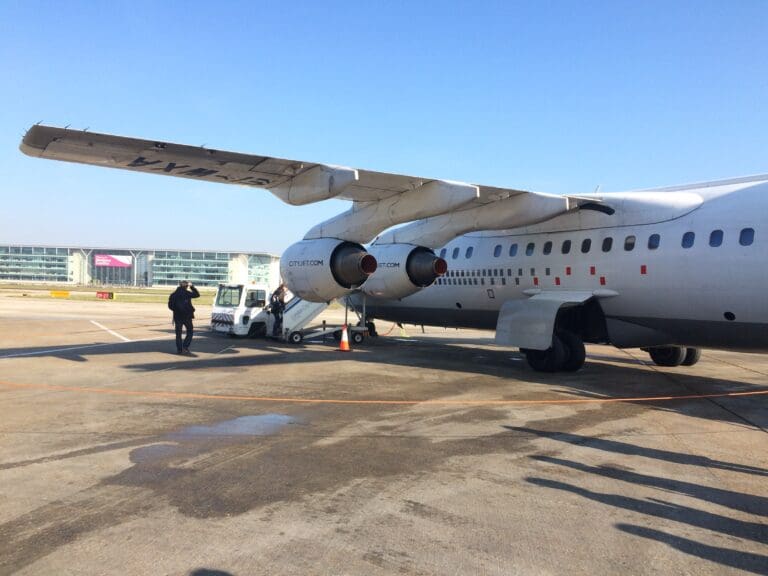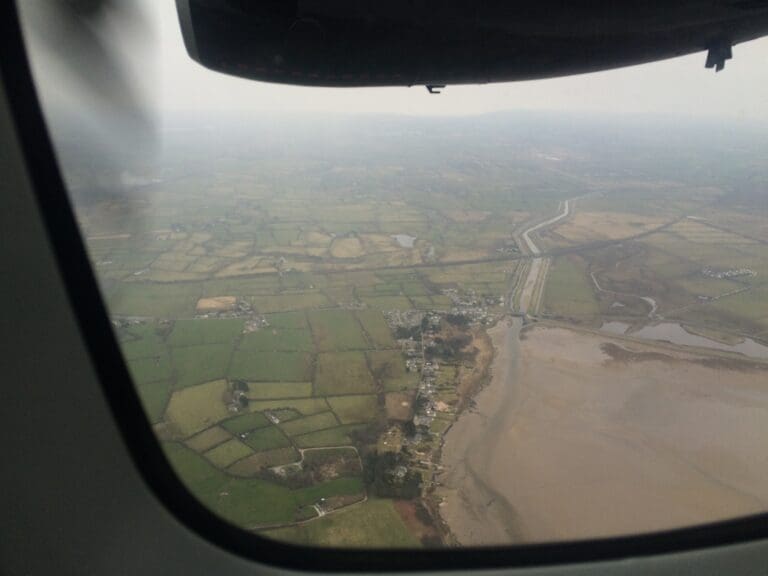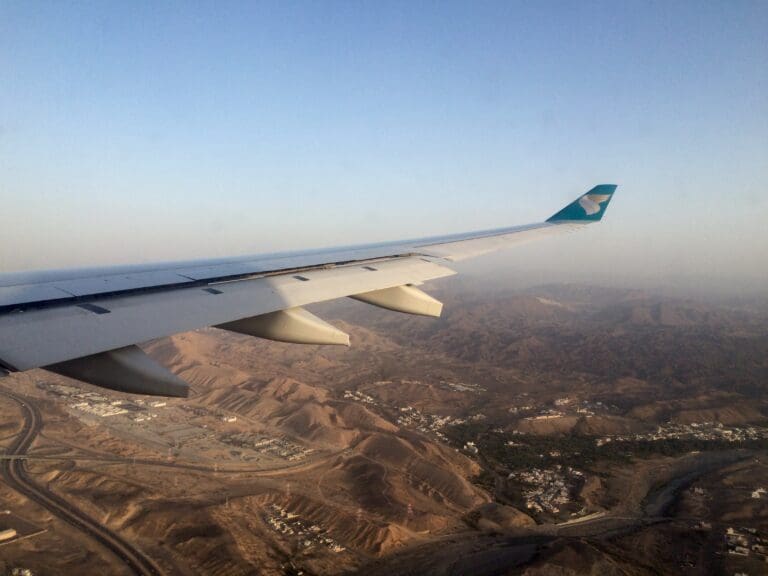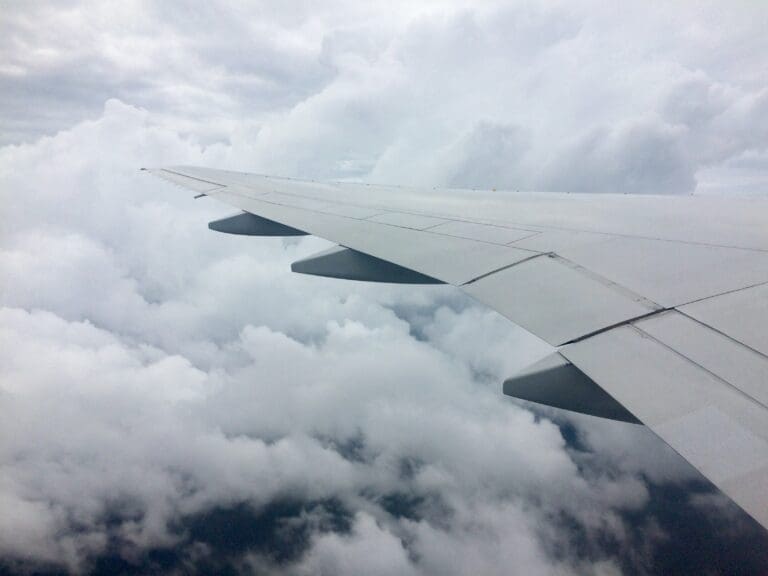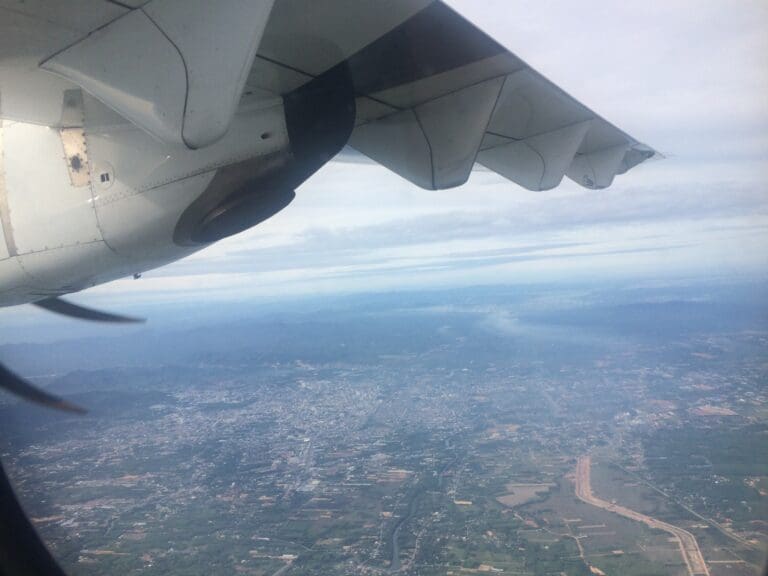Taming Korean Air’s Whale: Seoul Incheon to Paris CDG on the A380
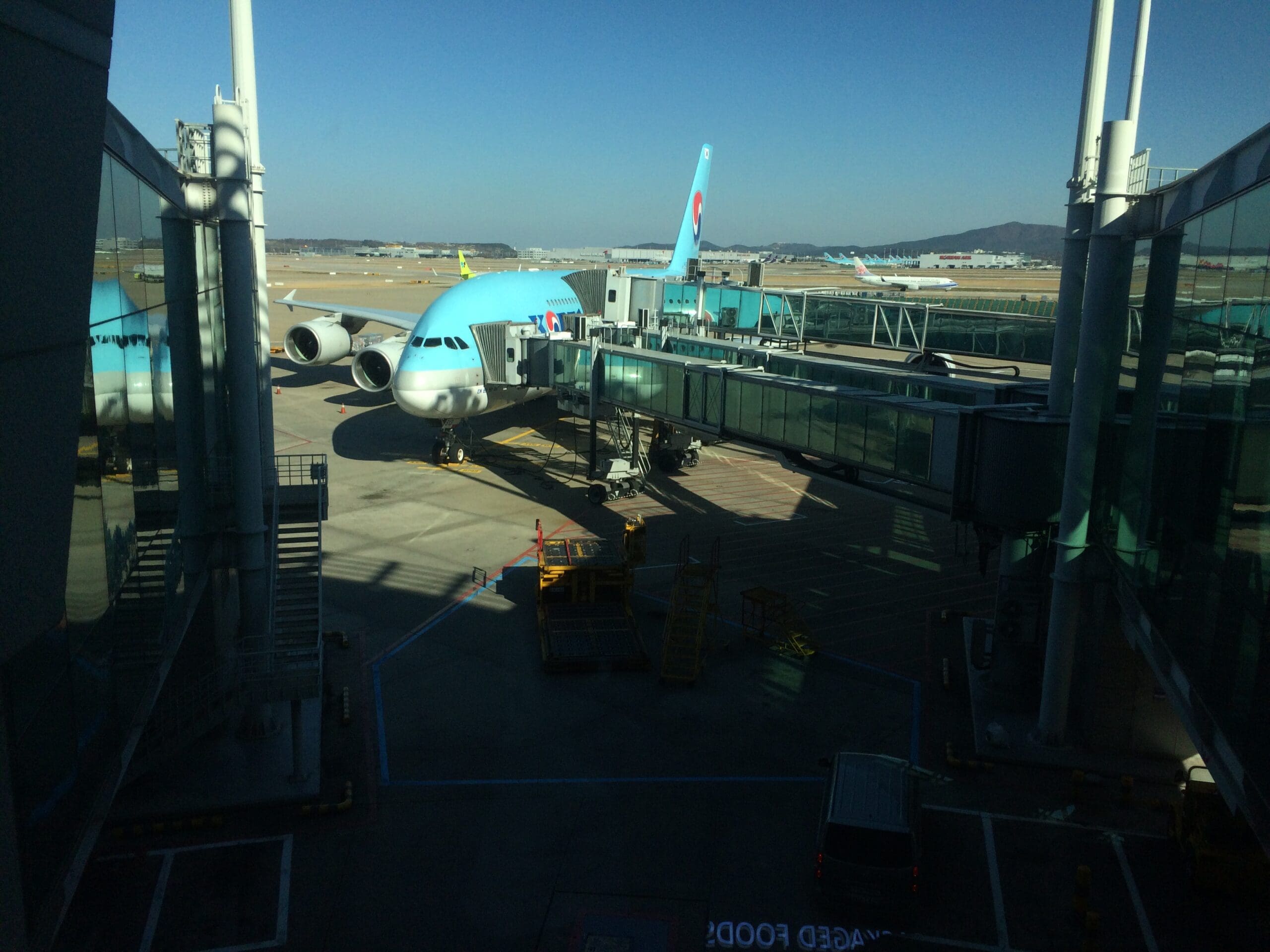
Background
In late November 2016, with a week off in Korea, I decided to return to my hometown in the UK. For many, making the 10,880 mile round trip between Seoul and Sheffield perhaps seems illogical given the short amount of time I had off, but, with it having been quite some time since I had visited my relatives in my hometown, and, given my unusual enjoyment of flying in an intercontinental sardine can, I decided to embark on this whirlwind trip across the world. Fortunately, when it comes to travelling between Korea and the UK, there are plenty of direct and indirect options.
Looking to maximise my time in Sheffield, I decided to fly to one of the city’s more ‘local’ airports as opposed to flying into London and then taking the train up to the city. First examining Manchester, my options consisted of Air France, British Airways, Finnair, KLM, Lufthansa and the ME3. Whilst offering a solid product, having already flown with Etihad Airways and Qatar Airways between Manchester and Korea, I wanted to try something new. Emirates would have been a nice option however their prices were a little too high for my liking, as were those of British Airways, Finnair and Lufthansa. Seeking to collect plenty of mileage on my Korean Air Skypass account, Air France-KLM seemed to be the logical choice for me on this trip and so I soon began searching for flights on KLM’s website.
As one would hope from one of the world’s major carriers, I found KLM’s website to be well laid out and easy to use. Upon undertaking a search for flights, I was soon presented with a cornucopia of options between Manchester and Seoul – including flights operated by Asiana Airlines, China Eastern Airlines, Flybe and Korean Air, alongside of course Air France and KLM, and their regional subsidiaries. Needing to be in a university class until 1030, I ruled out KLM’s overnight 0055 flight and the 0945 Air France Boeing 777 service to Paris CDG. Thankfully, Korean Air’s afternoon Airbus A380 operated flight from Seoul Incheon to Paris CDG was offered at the same low price as the aforementioned two options, and once on the ground in the French capital I would have a couple of hours before heading onwards to Manchester on a Flybe Embraer 195. Seeing as this itinerary would allow me to fly onboard an Airbus A380, and provide me with my first ever experience of flying with Korean Air on an international flight, this was a no brainer!
Being an aviation enthusiast, it was only natural that I sought to work in KLM’s Boeing 747-400 Combi into my trip and so for the return I opted to fly via Amsterdam. Whilst I had initially intended to depart from Manchester, I soon discovered that I could fly from Humberside on one of KLM Cityhopper’s rare Fokker 70s for the same price. Fortunately, booking was a quick and easy process although with my outbound flights not being operated by KLM, I was initially unable to reserve a seat on the Korean Air and Flybe legs. However, I later found out that I could do this on the Air France website.
The Journey
By the time my departure day rolled around, Seoul had plunged into winter and on the morning of my flight, the air temperature failed to exceed -5 degrees. Unfortunately, a couple of days prior I had succumbed to a rather nasty cold which made the thought of travelling across the world onboard an Airbus A380 somewhat less attractive than it had been upon booking my flight a couple of months earlier. Nevertheless, after packing the last of my things into my bags and having a quick shower, I voyaged out onto the quiet morning streets of Sincheon at around 0800. First up was breakfast, and whilst not feeling particularly hungry, I stopped by for a dosirak consisting of rice, various side dishes and a portion of pork, before continuing onwards to university.
Needing to attend my morning university class, around twenty minutes later, with a small suitcase in tow, I rocked up to the large classroom where I sat through a good hour’s worth of speeches on contemporary Korean history. Eventually, my morning class came to an end and it was time to continue onwards to Incheon Airport. From university, I made a ten minute walk to Hongdae Station before heading deep underground to the AREX platforms. A few minutes later, an airport bound train appeared and I soon found myself hurtling through Seoul’s western fringes as we voyaged over to the airport. After an uneventful journey, the train arrived at its terminus and I made my way up into the airport’s rail transport hub. After tapping my T-Money card on the barriers, I proceeded out of the station and walked over the bridge, soon arriving in the cavernous and surprisingly empty check-in hall.
Making it to Incheon Airport with around two and a half hours to go until the scheduled departure time of my flight to Paris, I had plenty of time to explore the nooks and crannies of the terminal. Nevertheless, I decided to make a beeline for Korean Air’s large and well-branded check-in area. Upon arriving there, I joined a short queue and within no more than two minutes I walked up to a desk where I received a warm and friendly greeting by one of Korean Air’s ground agents. Despite booking the entire journey from KLM, after furiously tapping away for a good minute during which they produced some confused looks, the agent informed me that I would have to check-in again for the Flybe operated leg up to Manchester in Paris. Whilst being a slight grievance, especially seeing as I would have otherwise simply been able to remain in the airside portion of the terminal, seeing as I lacked any luggage, I was confident that this would not derail my plans of getting to Manchester that evening.

Once my Korean Air boarding pass had been printed off, I continued onwards and soon found myself joining a short queue for one of the terminal’s security checkpoints. Given the surprising lack of passengers in the terminal that lunchtime, this was a breeze and likewise, immigration was a quick and hassle-free process and I thus entered the airside portion of the terminal with around 2H15 to go until my flight.
Suffering from a sore throughout, once through to the airside area I was in dire need of a drink. As much as I think Incheon Airport is great, unfortunately, the terminal lacks a single convenience store and those looking to buy something in the terminal must put up with the usual inflated airport prices. In the end I purchased a grape juice for 2000 won (double convenience store price) and a Korean style potato hot dog for 3000 won (triple street food stall prices). Perhaps unsurprisingly, the airside portion of the terminal seemed to be infinitely busier than the landside portion, with plenty of transit passengers passing through on their long journeys between China and Southeast Asia and North America. Once sufficiently strolled out, I took a seat near one of the terminal’s large windows and watched the action as aircraft departed off to destinations across the globe.
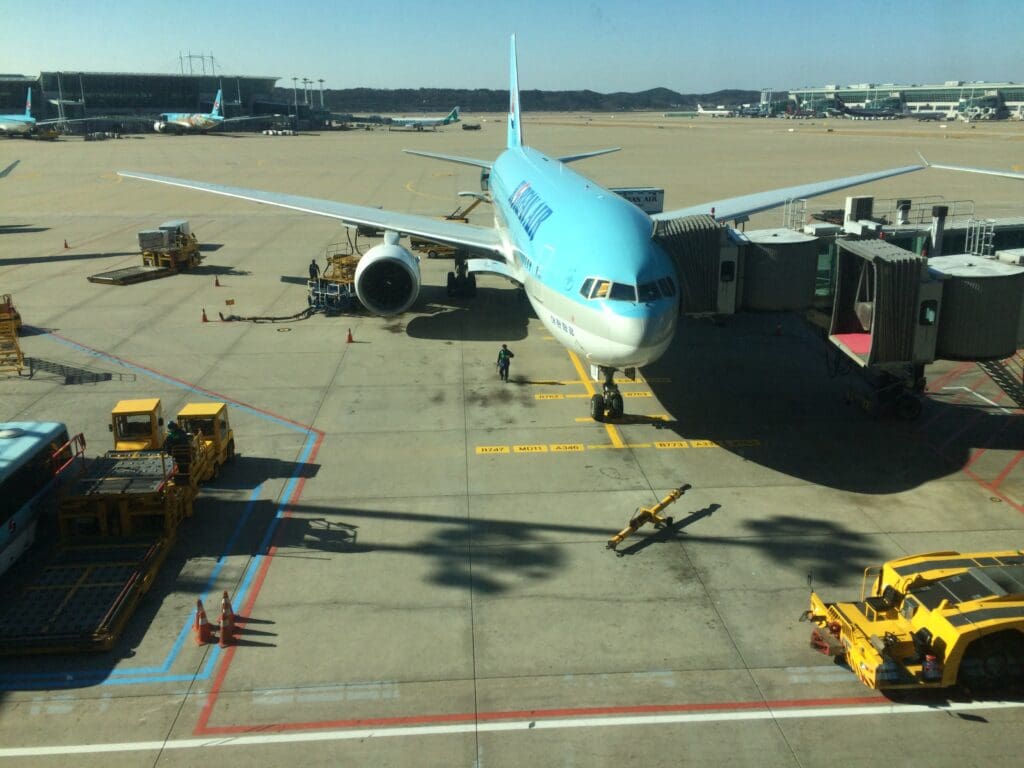
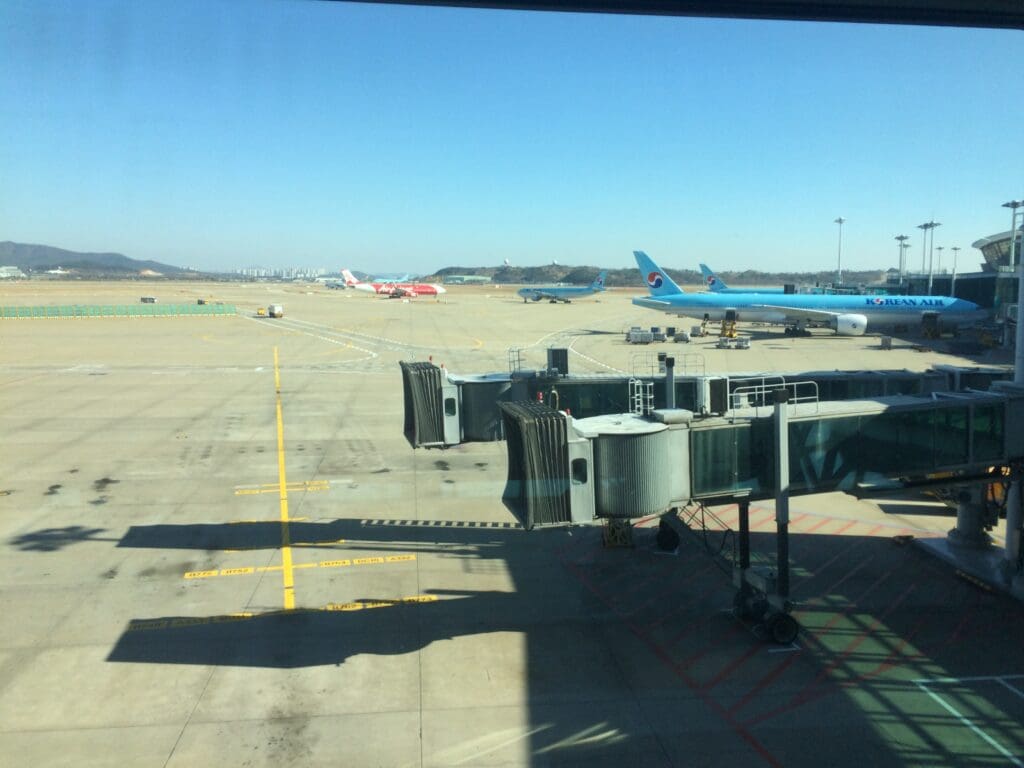
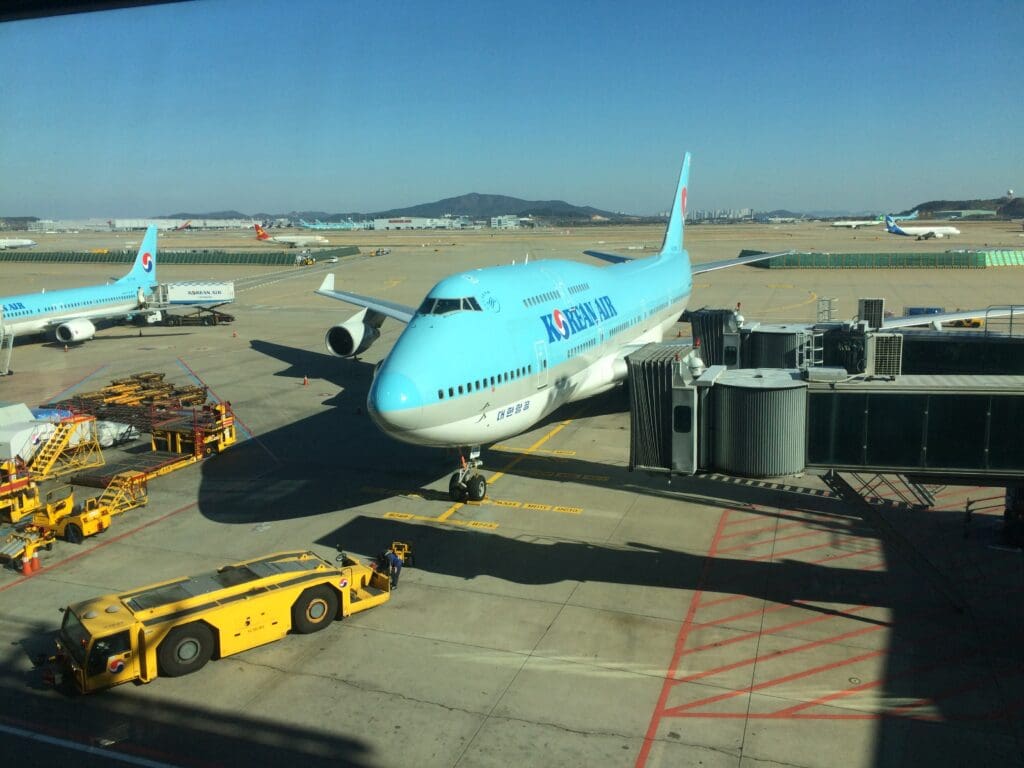
Eventually, I made my way over to Gate 17 where the massive Airbus A380 that would be operating the slog over to Paris could be seen being readied for its journey to Europe. This whale of an aircraft took the form of Airbus A380-861, HL7613. As with all Airbus A380s, this jet was assembled at Airbus’ Toulouse Blagnac plant and is the 59th Airbus A380 to have been manufactured. First taking to the skies in February 2011, the aircraft was delivered to Korean Air in August that year and was thus almost six years old at the time of my flight in late November 2016. In the past week, this particular Airbus had made trips to New York and Los Angeles.
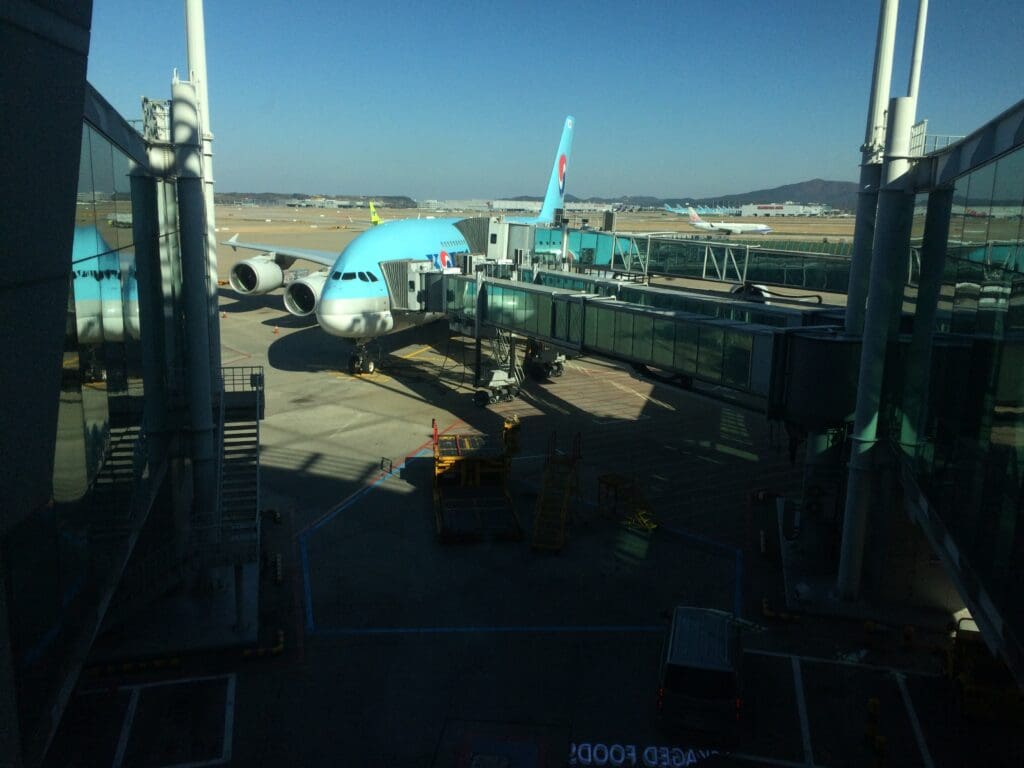
As I waited, I was a little surprised at just how empty the gate area was. That said, seeing as my flight was neither aligned with any French or Korean holidays, I was a little sceptical that the flight would be busy. With a little over thirty minutes to go until departure, at 1325 an announcement was made informing passengers of the boarding order, with the first passengers being permitted to head down to the aircraft at 1330. Soon, I wandered over to the gate podium and had my boarding pass scanned and passport checked before I was free to continue onwards down the escalators and towards the whale. Just before reaching the jetbridge, I was subject to another short security check before being allowed to continue onwards.

With no queue ahead of me, it wasn’t long before I stepped into one of the Airbus’ many galleys where I received a warm and friendly greeting from the two crew members standing there having been tasked with welcoming passengers. Korean Air’s Airbus A380s feature a three class configuration, with 12 First Class suites, 94 Business Class seats and 301 Economy seats. In terms of the layout, First class is situated in the forwardmost section of the main deck and so having boarded via the L2 door, once onboard, I turned right and entered the forwardmost of the three Economy cabins.
Despite the colourful and distinctive exterior of Korean Air’s jets, unfortunately, this does not seem to extend to their aircrafts’ Economy cabins which feature a drab colour palette of dark brown and blue fabric covered seats. These seats are arranged in an A380 standard 3-4-3 layout and come with an adjustable headrest that is partially covered by a disposable fabric headrest cover. The rears feature a bifold tray table and cup holder and 10.6 inch touchscreen personal inflight entertainment screen, whilst passengers can also enjoy the luxury of their own universal power outlet and USB port. Meanwhile, upon boarding, a cushion, blanket and bottle of Hanjin Jeju Pure Water could be found on each seat. These were soon supplemented by headphones and basic amenity kits were distributed prior to pushback.
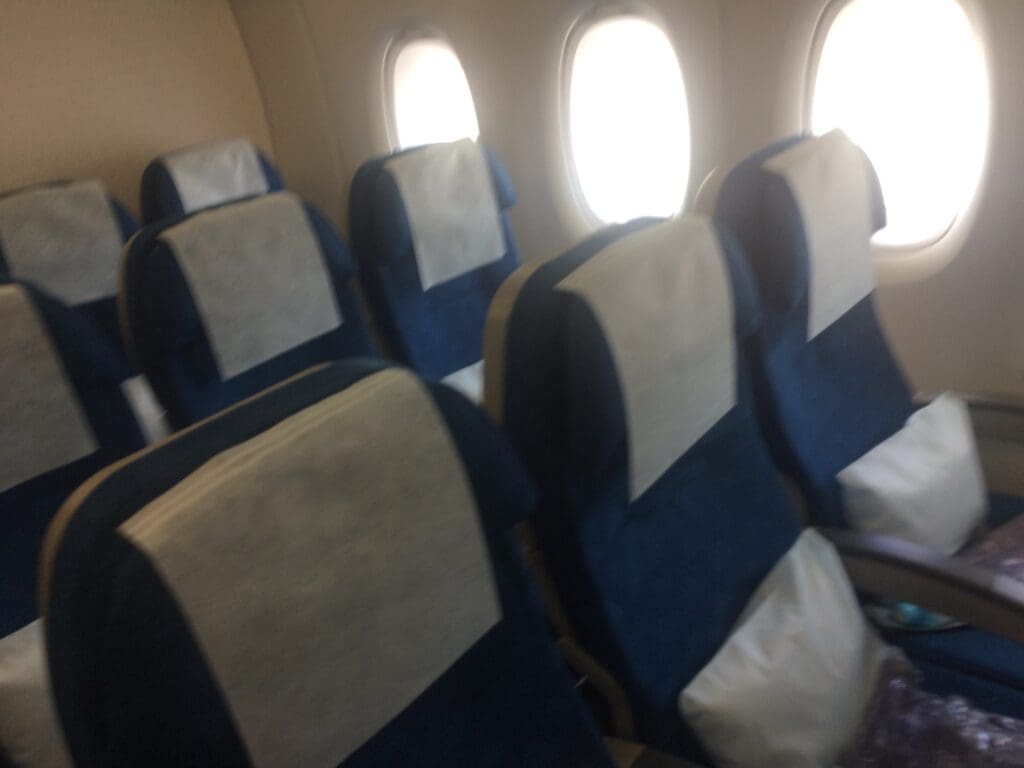

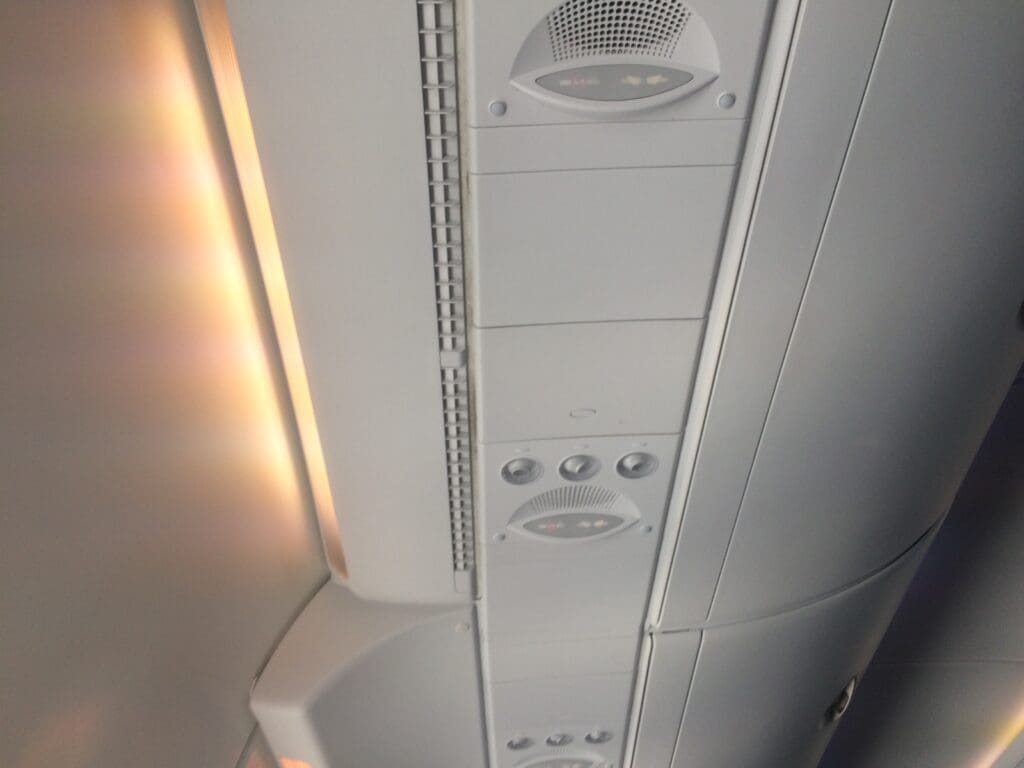

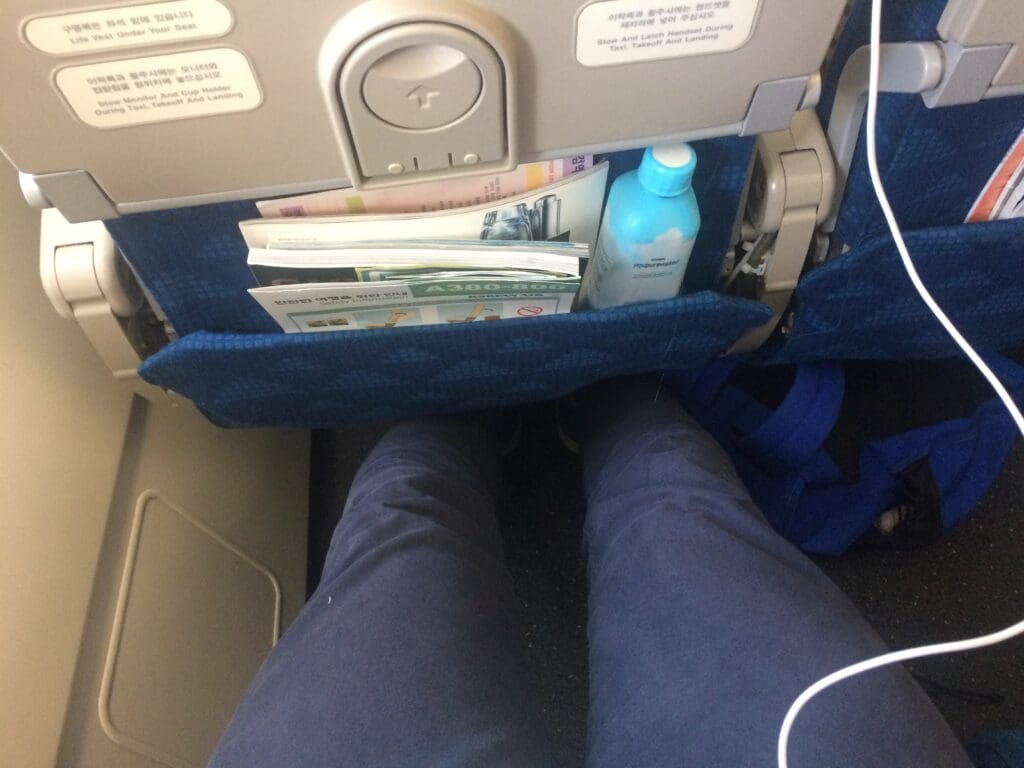
As I trekked down the cabin, each flight attendant that I passed welcomed me onboard in English and I soon reached my row near the very rear of the aircraft. Despite being in the final cohort of passengers to board the flight, the Economy section was almost entirely empty and at a guess I would say that this was no more than 10% full! In spite of the rather uninspiring colours of the cabin, I found the seat to be very comfortable. This was both well-padded and featured a superb amount of legroom, whilst both the plug socket and USB ports worked as they should – something that many passengers will know is not always the case! Turning to the personal entertainment screen, this was of a decent quality and the inflight entertainment system was fast and responsive, loaded with plenty of TV programmes, films and music. However, one thing that I did think was a little strange was the lack of Korean films. There are of course a wealth of good and internationally famous Korean films and yet only four could be found on the system.
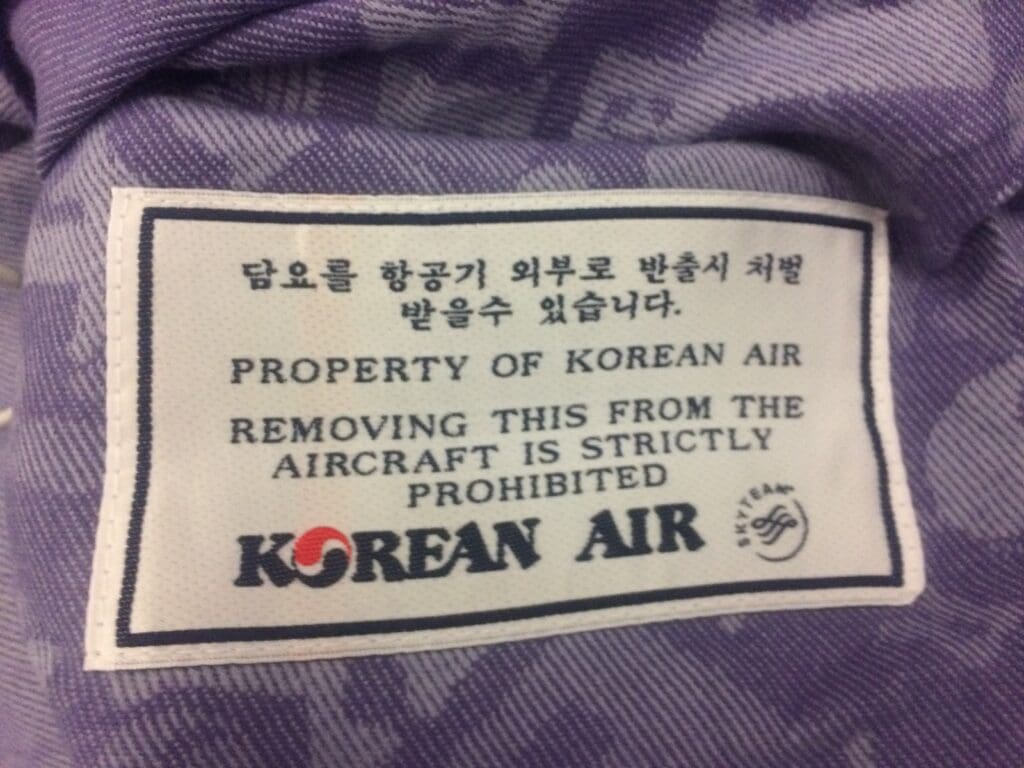
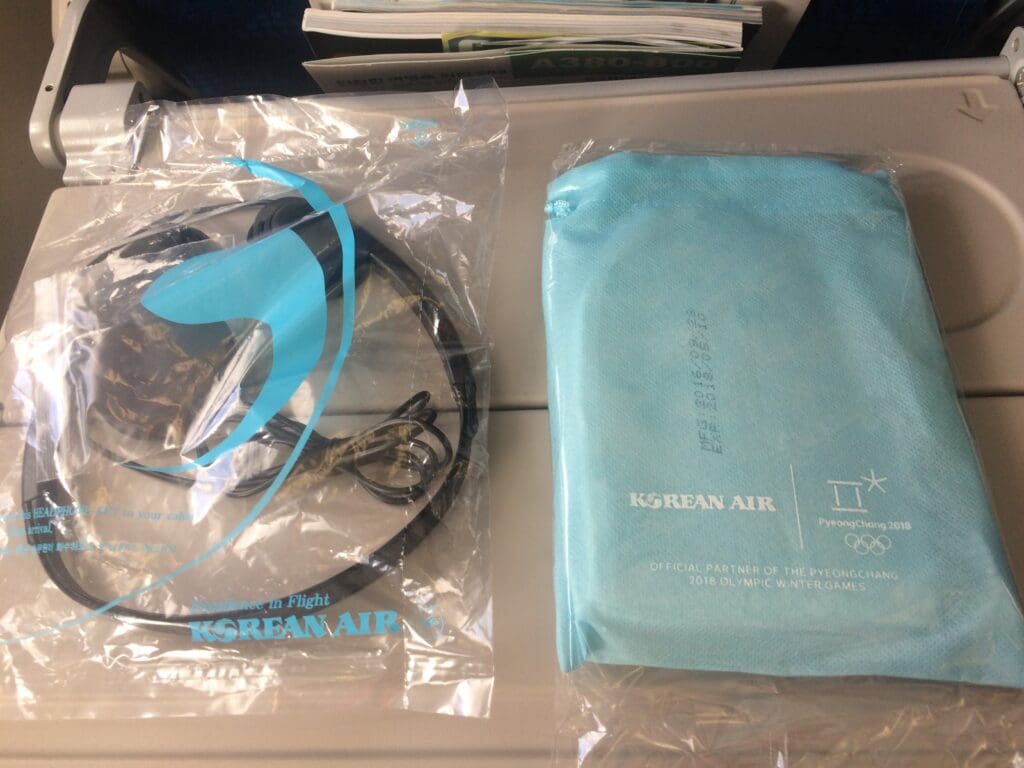
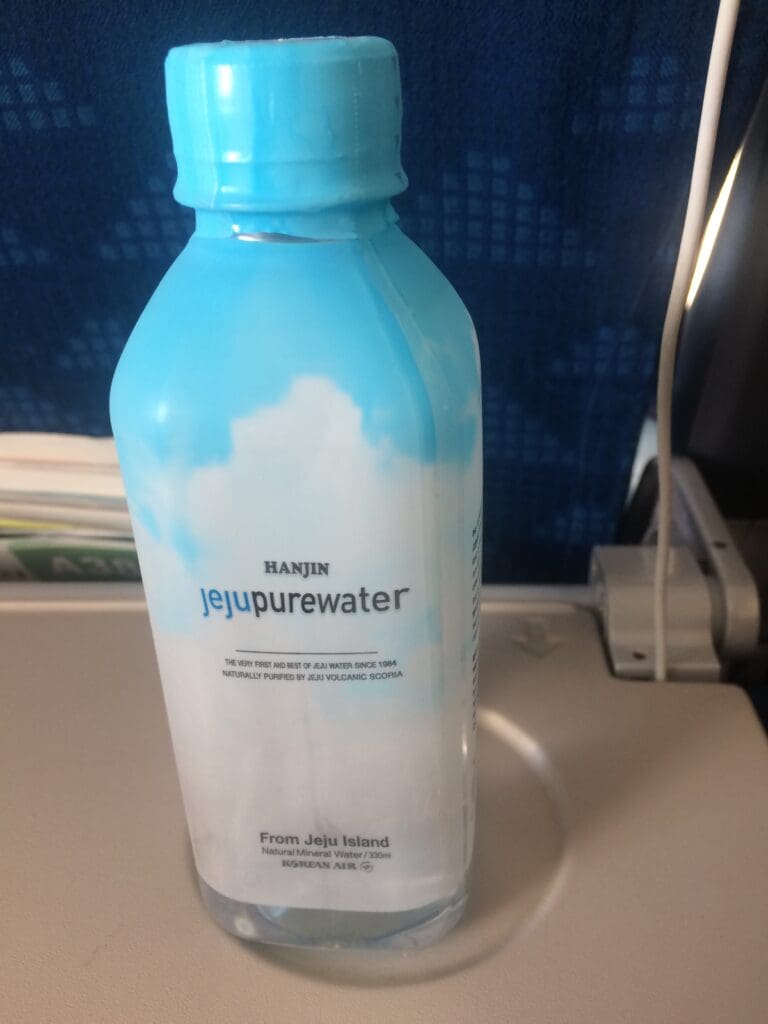
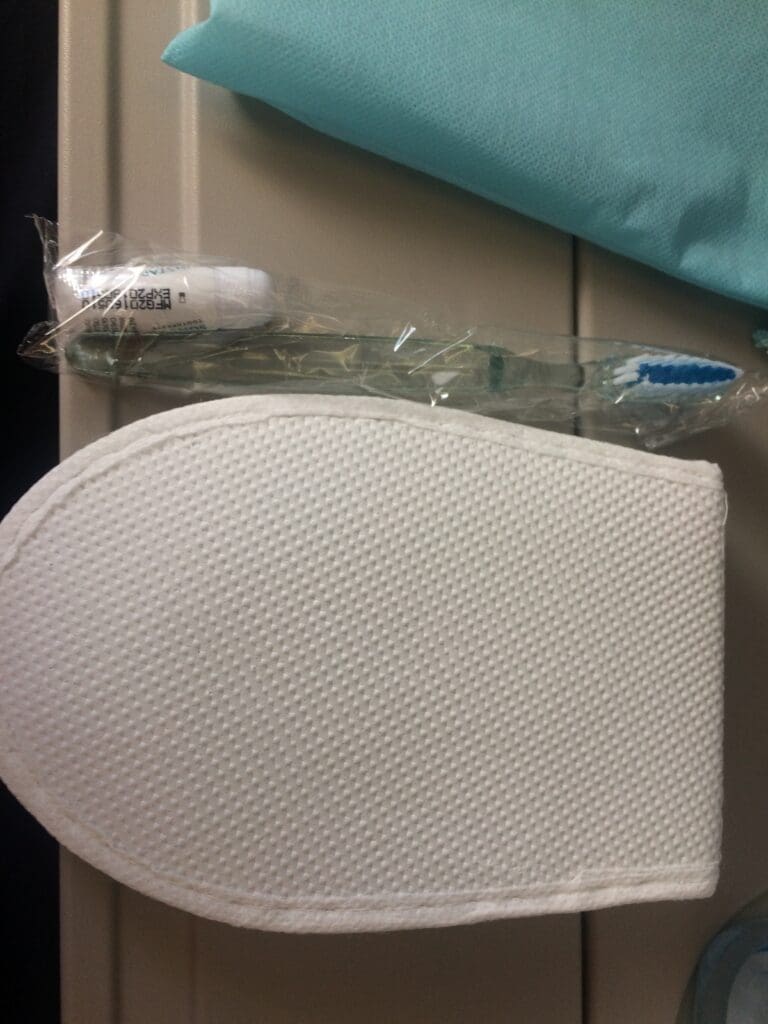
Given the very light load, boarding was announced as complete well ahead of our scheduled departure time. As soon as the doors had been closed and armed, the purser performed a welcome speech in Korean and English. During this, they went through the usual thanks, welcomes and warnings, and informed passengers that the flight time to Paris would be twelve hours. This was then followed by a pre-recorded message in French. Looking around, the vast majority of passengers onboard seemed to hail from Korea, with many taking the form of late middle aged tourists. Meanwhile, interestingly, many of the French passengers on board were dressed for summer, with some even sporting flip-flops and shorts indicating that they had not started their journeys in wintery Korea!
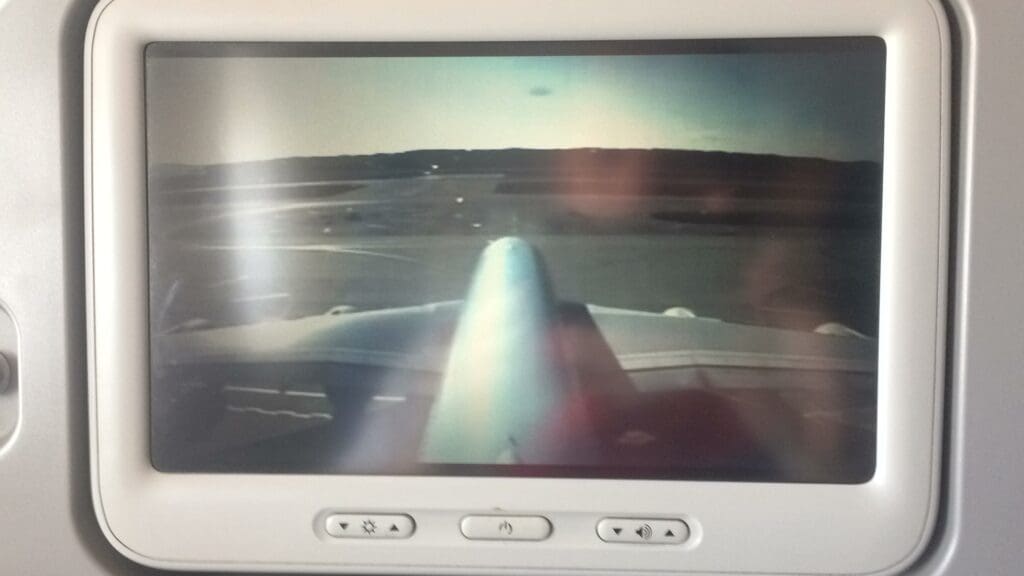

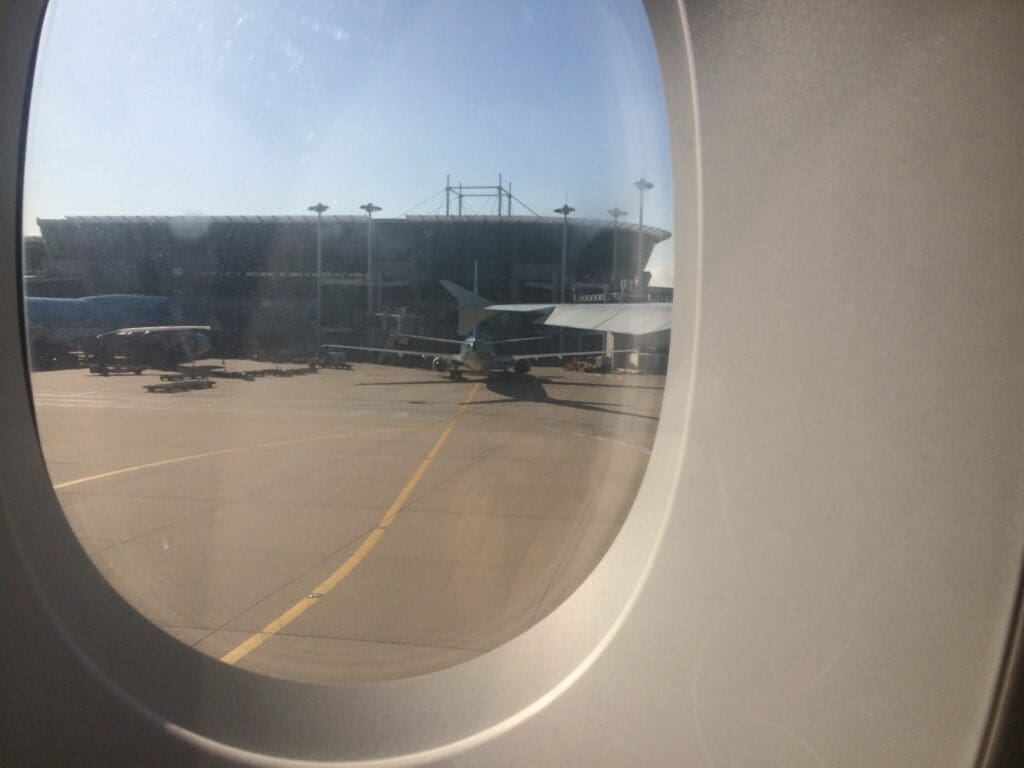
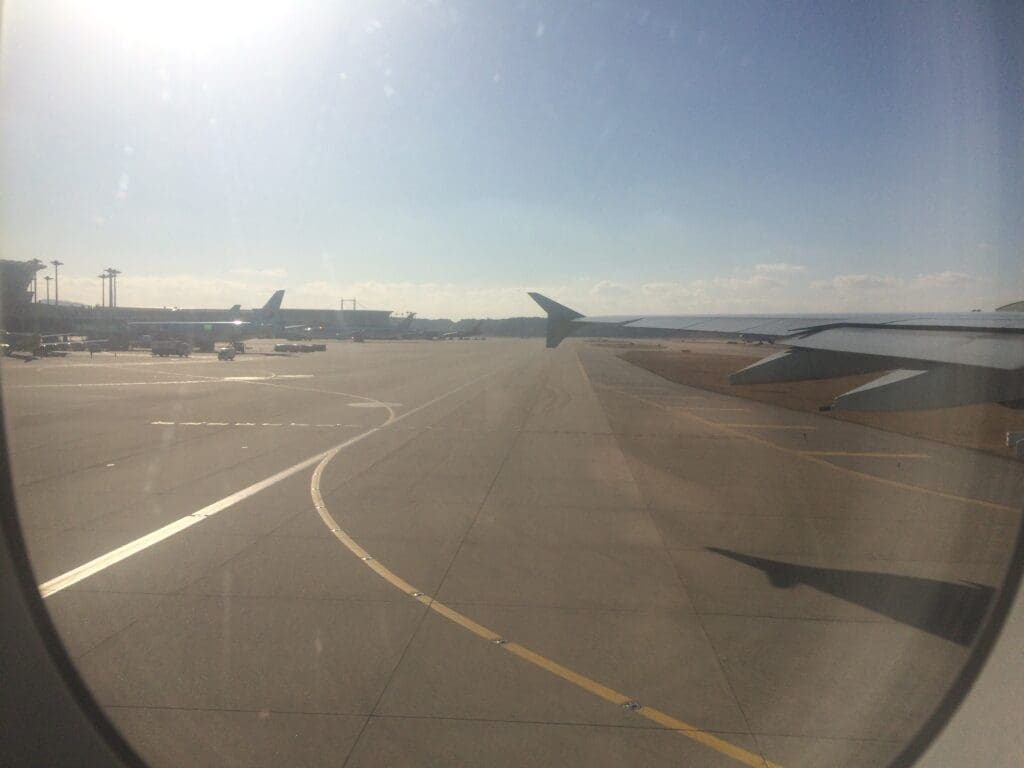
At 1405, the Airbus jolted backwards as we were pushed back away from the gate. At this stage of the journey, Korean Air’s dated safety video took over the inflight entertainment screens whilst one-by-one, the Airbus’ four gigantic Engine Alliance GP7270 engines powered up into life. Once the safety video reached its conclusion, I decided to have a look through the forward facing camera and tuned into this just as the tug was being disconnected. Once clear of the aircraft, the Airbus slowly and cautiously powered away under its own steam and voyaged over to Runway 34. By this time, the crew had made multiple passes through the cabin, checking and re-checking that all was secure for our departure.
Despite the constant stream of traffic, that afternoon no waiting was required and at 1423, the Airbus lumbered onto the runway. Following a short pause, the four engines spooled up as we performed what seemed to be a very gentle take-off roll before floating upwards into the Korean skies. During the first few seconds of the flight, the coastal village of Wangsan popped into view before we left the island behind and slowly climbed out over the waters of the Yellow Sea. Given the close proximity of North Korea, moments after leaving Incheon Airport behind, the Airbus banked to the left and rolled out on a westerly heading.
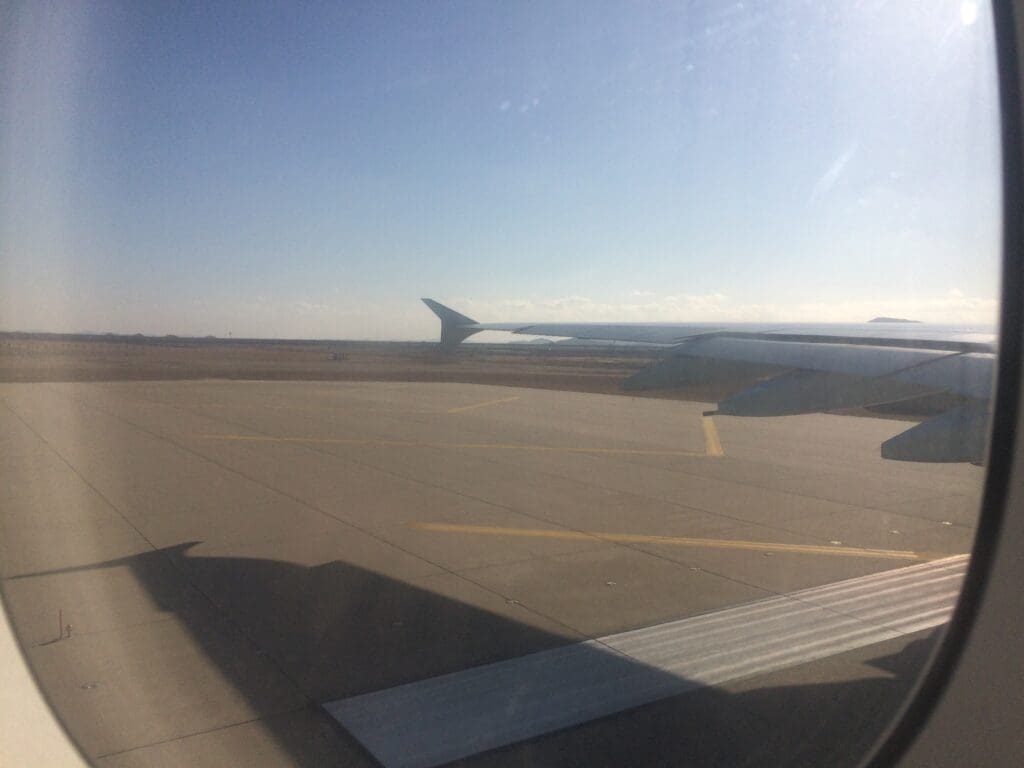
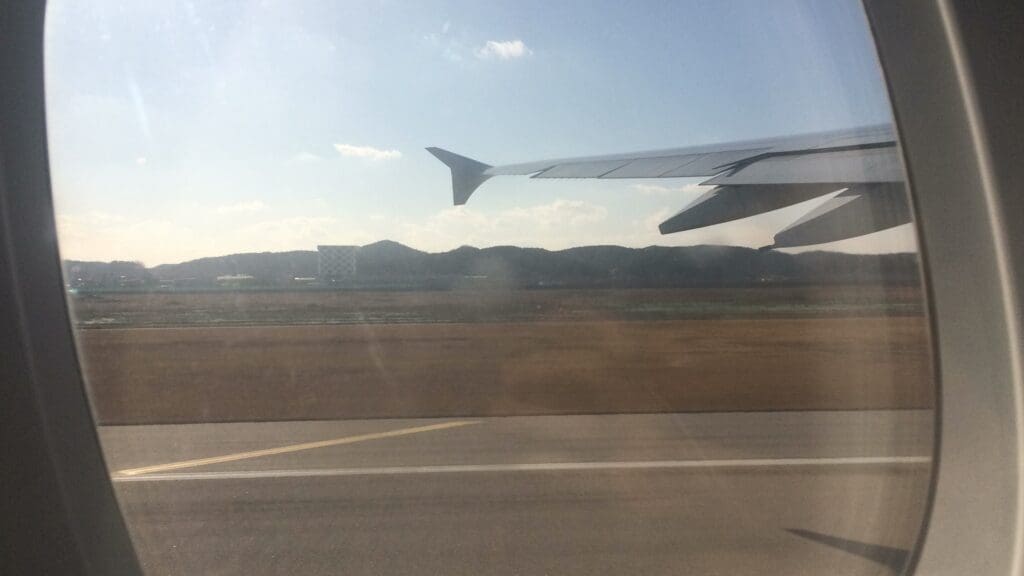
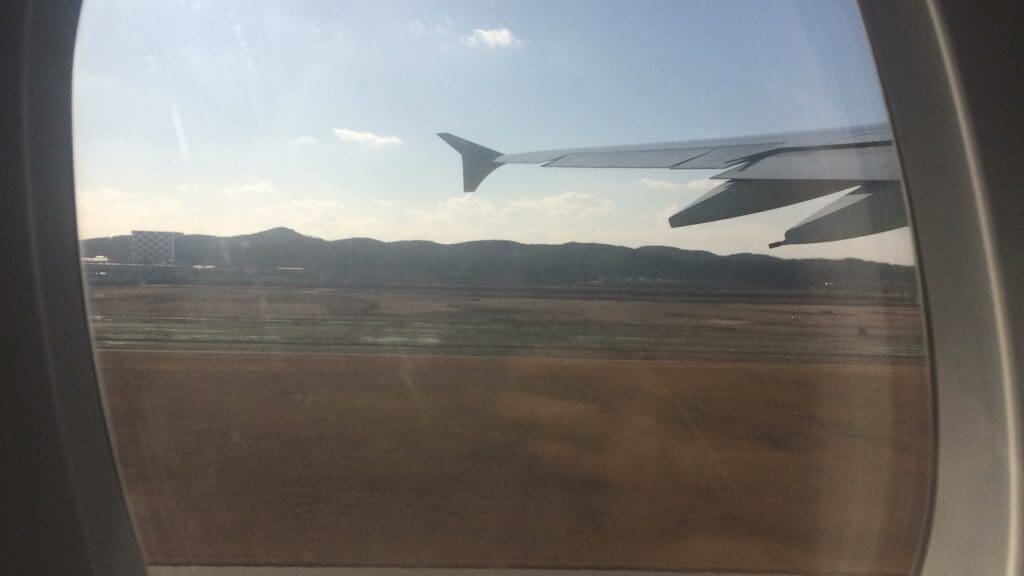

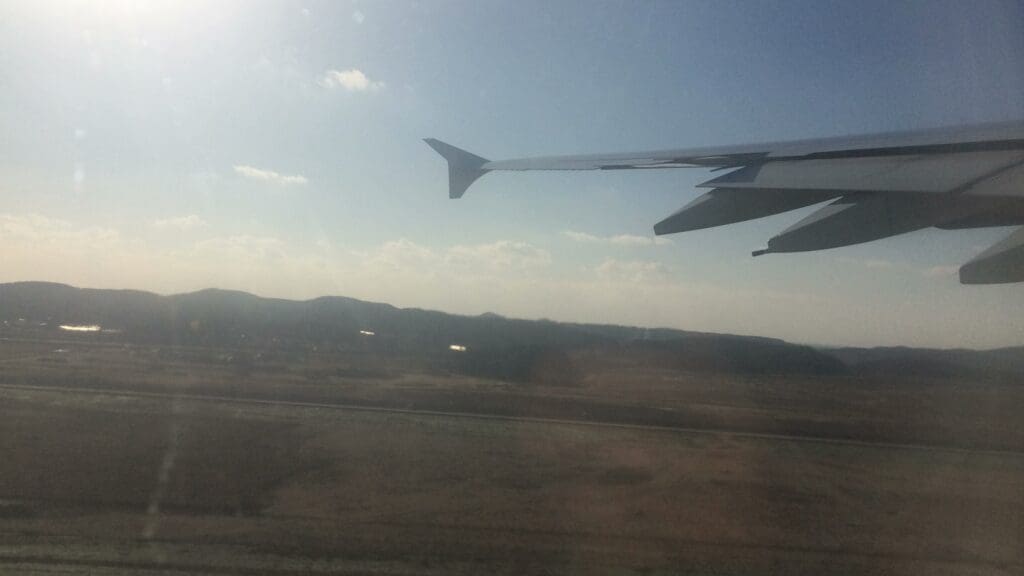
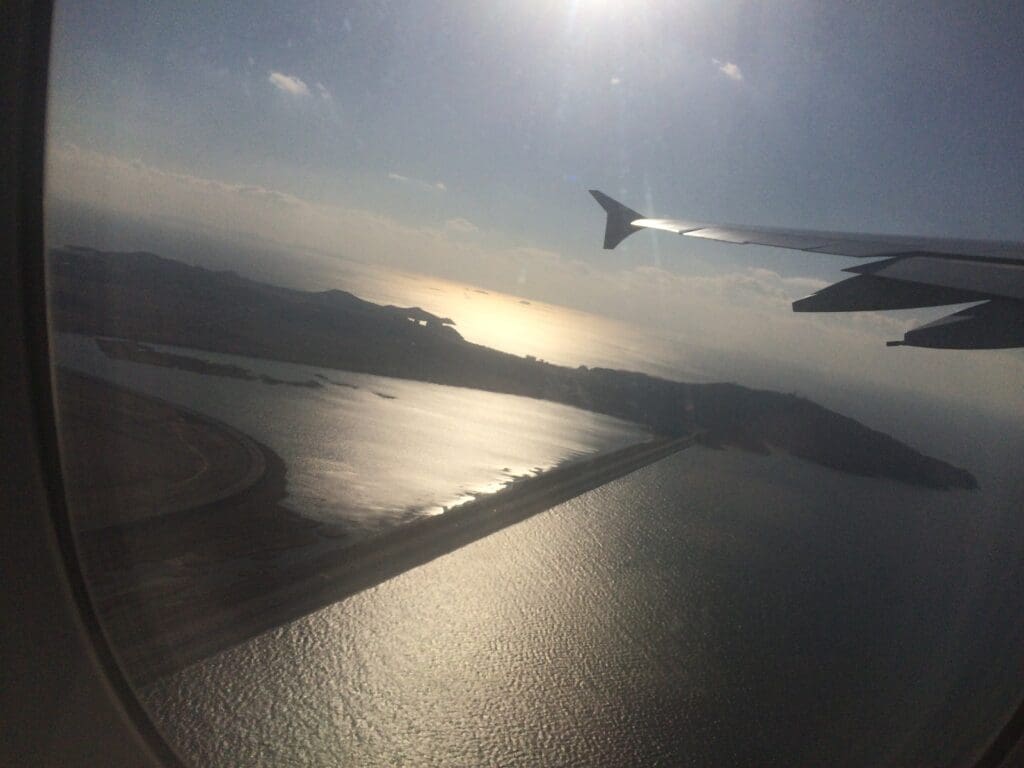
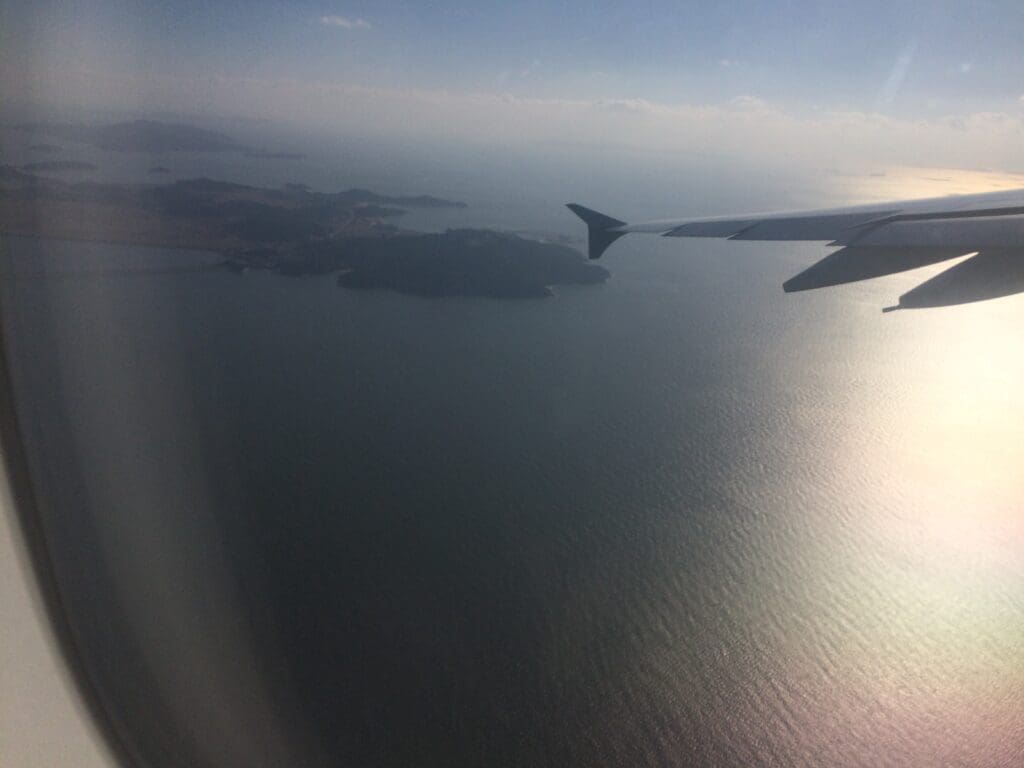
That afternoon, the climb was a smooth affair with virtually no turbulence whatsoever as we rose through the clear skies. Thus, the crew were released from their seats in a matter of minutes and soon began the first round of service. This consisted of nuts (in packets – although I didn’t make a fuss) and drinks. I opted to pair this with a plastic cup of Jeju orange juice, and, with the flight attendant also politely insisting that I have another drink, I also went for a red wine. As I consumed this, the calming tones of Captain Jang filled the cabin as they performed their welcome speech in Korean and English.
Looking outside, during the first thirty minutes or so of the flight the Airbus made its way past the small inhabited islands that sit precariously close to the Northern Limit Line, the maritime border between North and South Korea. Skirting cautiously around North Korean airspace so as not to avoid scrambling one of their vintage Soviet era fighters, the Airbus eventually left the Korean Peninsula behind and voyaged westwards over the East Sea. Somewhere between the Chinese peninsulas of Liaoning and Shandong, the carts were rolled out once more and the late lunch service commenced.

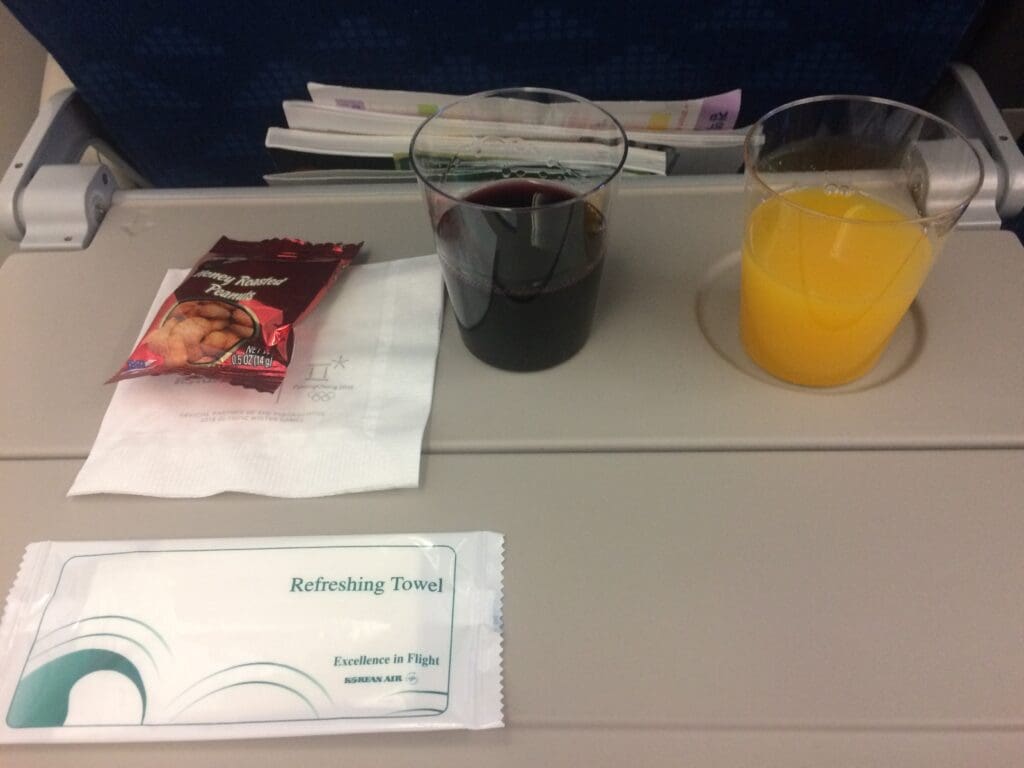
That day, there were to be two choices for lunch – a Western option and a Korean option. Specifically, chicken salad or Korean Air’s famous bibimbap. Unable to pass on the latter, once the friendly flight attendant reached my row, this was placed on my tray table. This came accompanied by miyokguk (seaweed soup), pickled cucumbers and a traditional sweet rice cake for dessert. In my opinion, it’s pretty difficult to go wrong with bibimbap and Korean Air certainly didn’t go wrong with theirs. That said, quantity wise, this was significantly smaller than what you could perhaps eat on the ground. This was accompanied by metal cutlery that featured Korean Air’s famous taeguk motif, as well as a small guide for assembling the bibimbap.
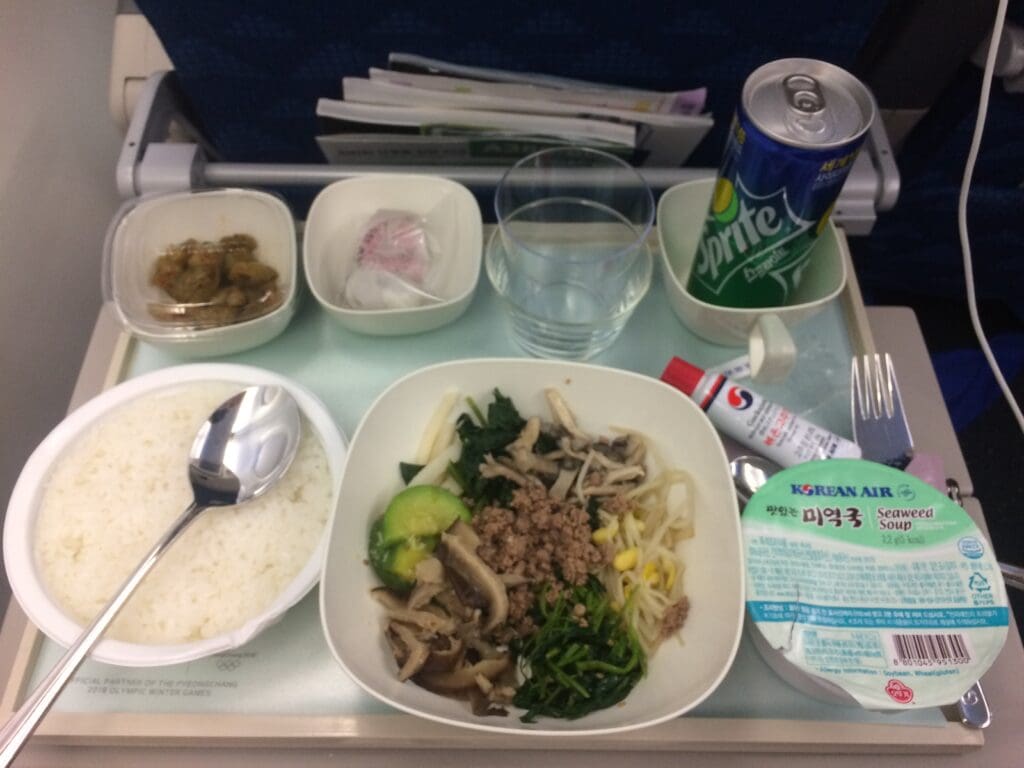
Around twenty minutes after the meals were distributed, a round of tea and coffee was made and trays were taken away from those passengers who, like me, had gobbled the meal down and had finished. By this time, the Airbus had crossed over the Chinese coastline and was now steaming towards Beijing. Unfortunately, at this stage, the crew passed around the cabin requesting all passengers to close their window blinds. After this, many of those around me seemed to drift off to sleep, however, unable to sleep, I decided to do some work before watching a couple of films.
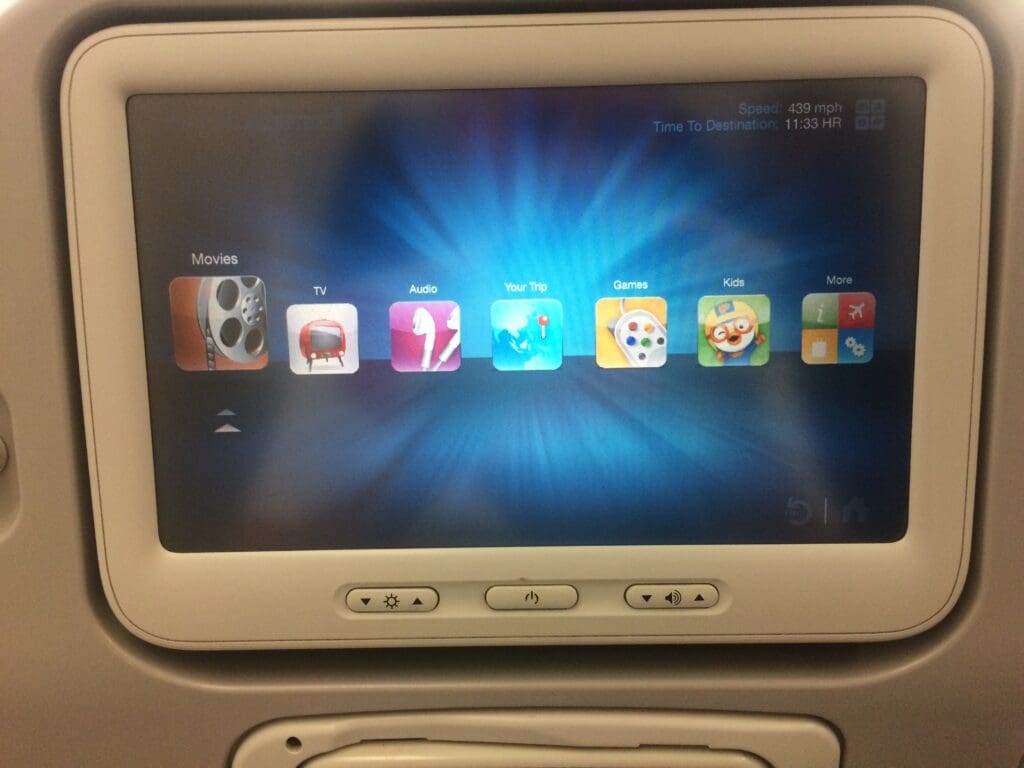
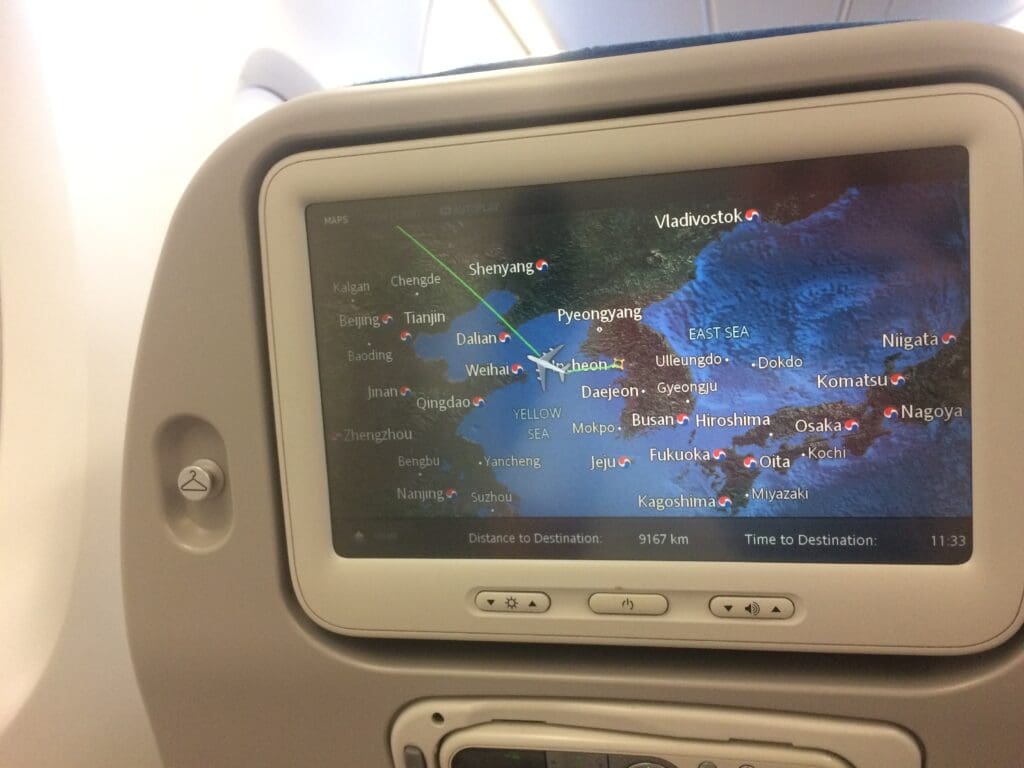
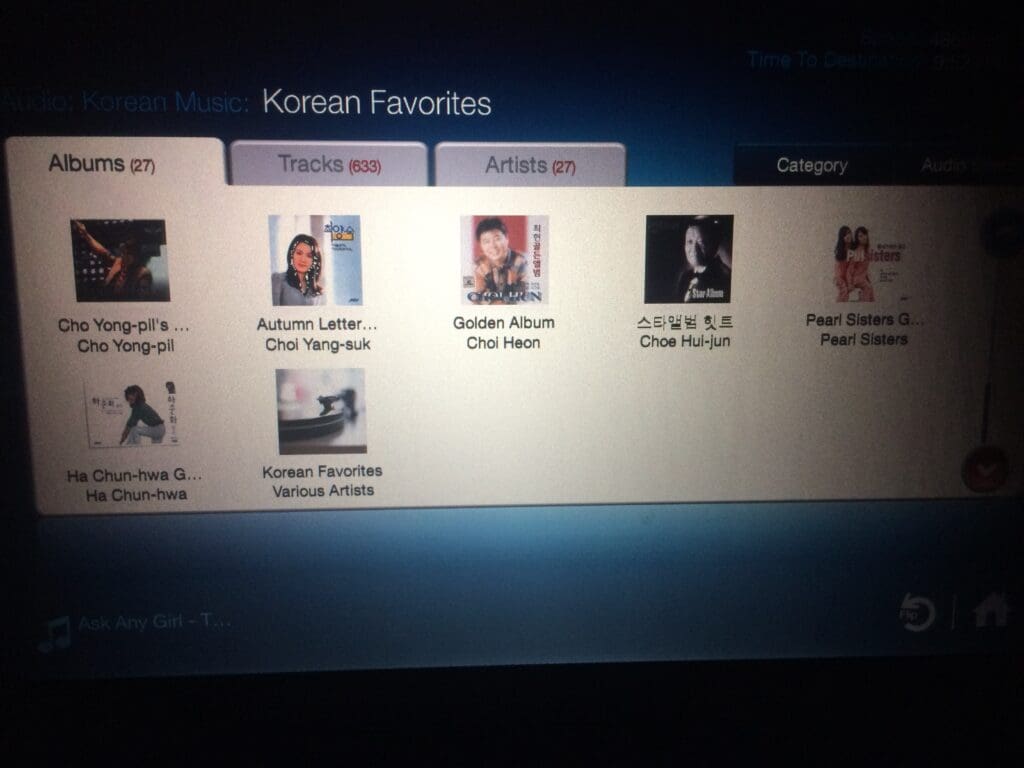
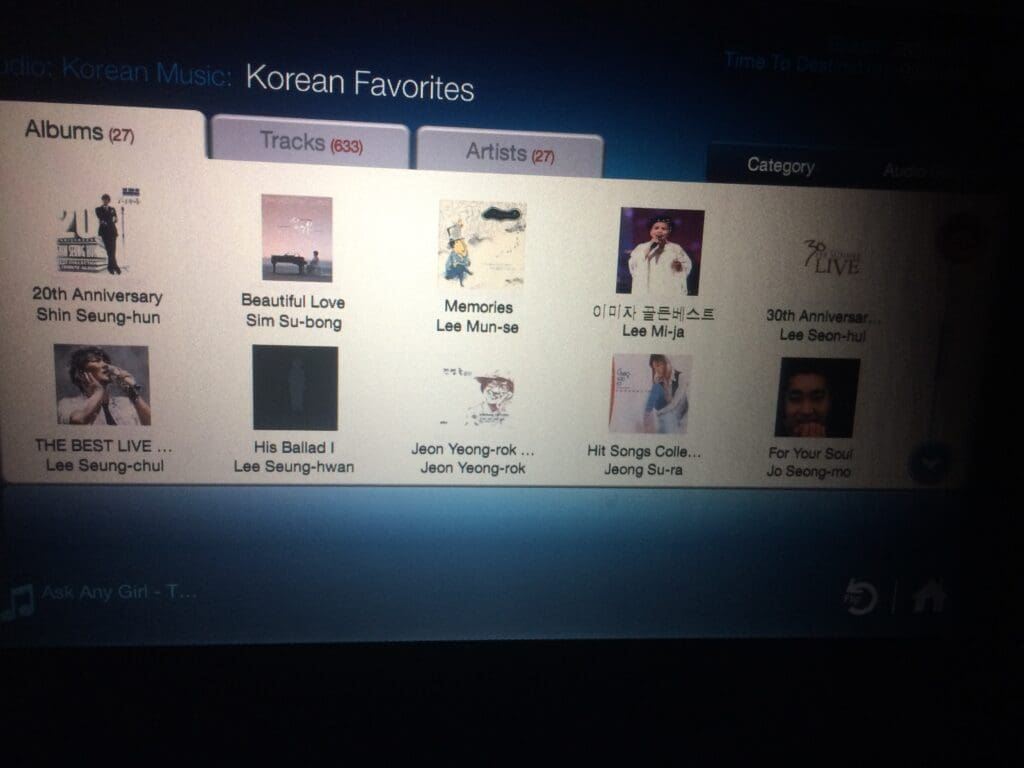
Flying in late November, it wasn’t long before the sun began to set and we remained at a near constant dusk as we edged westwards over the vast expanse of Russia. Around five hours into the flight, the crew passed through the cabin distributing an unhealthy snack that consisted of small rectangular pizza slices, shrimp flavoured crisps, nuts and drinks. After this, I decided to go for a wander and found myself at the unique ‘shop’ area at the rear of the cabin. Korean Air’s Airbus A380s feature a small counter and duty free shop area at the very rear of the main deck. Throughout the flight, a flight attendant could be seen manning the counter in what seemed to be an incredibly boring role! Atop of this, a small bowl of Daim chocolates could be seen for passengers to help themselves to. From there, I made a quick lavatory visit and found this to be clean, tidy and stocked with a range of items, thus leaving me with nothing to complain about.

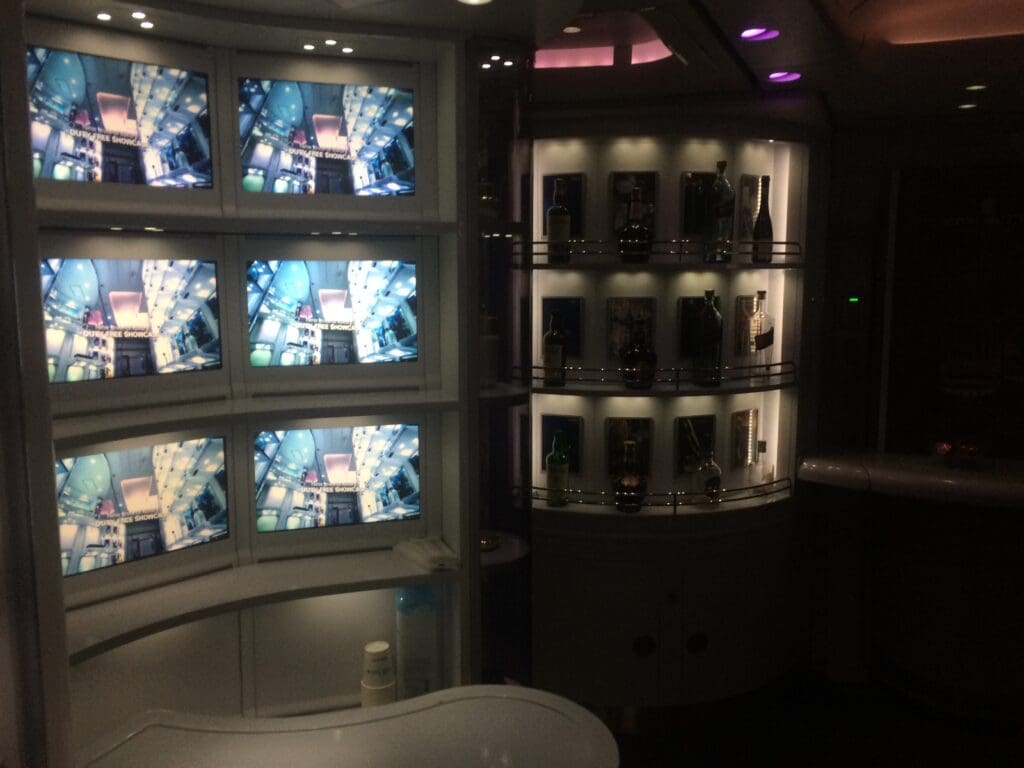
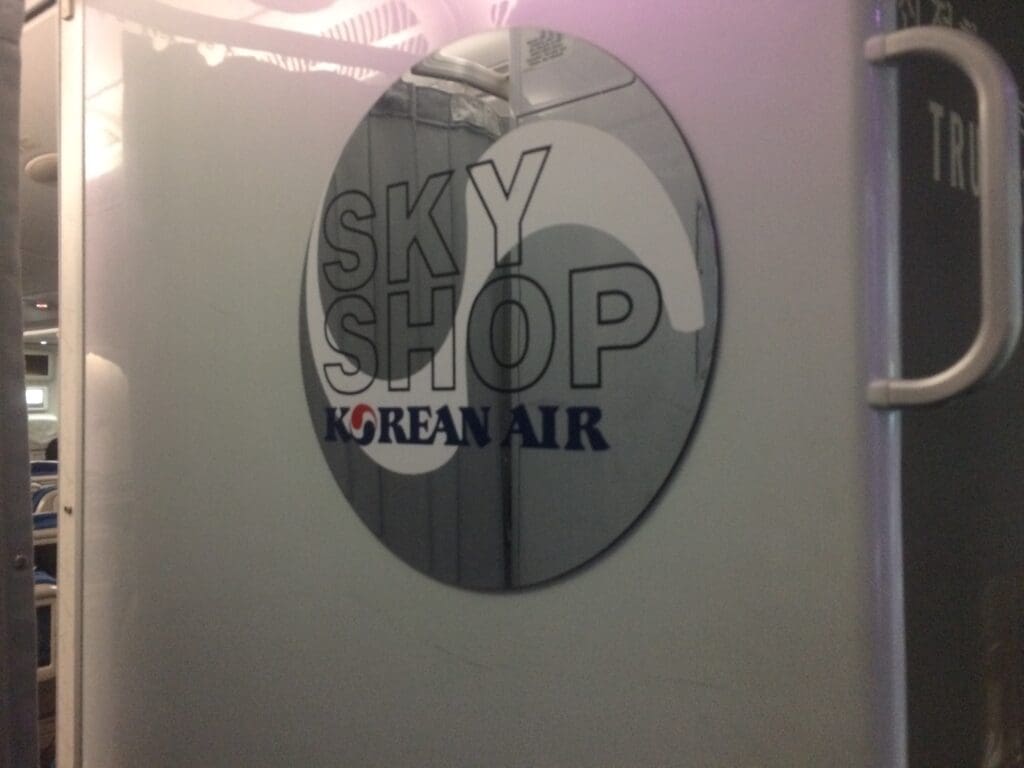
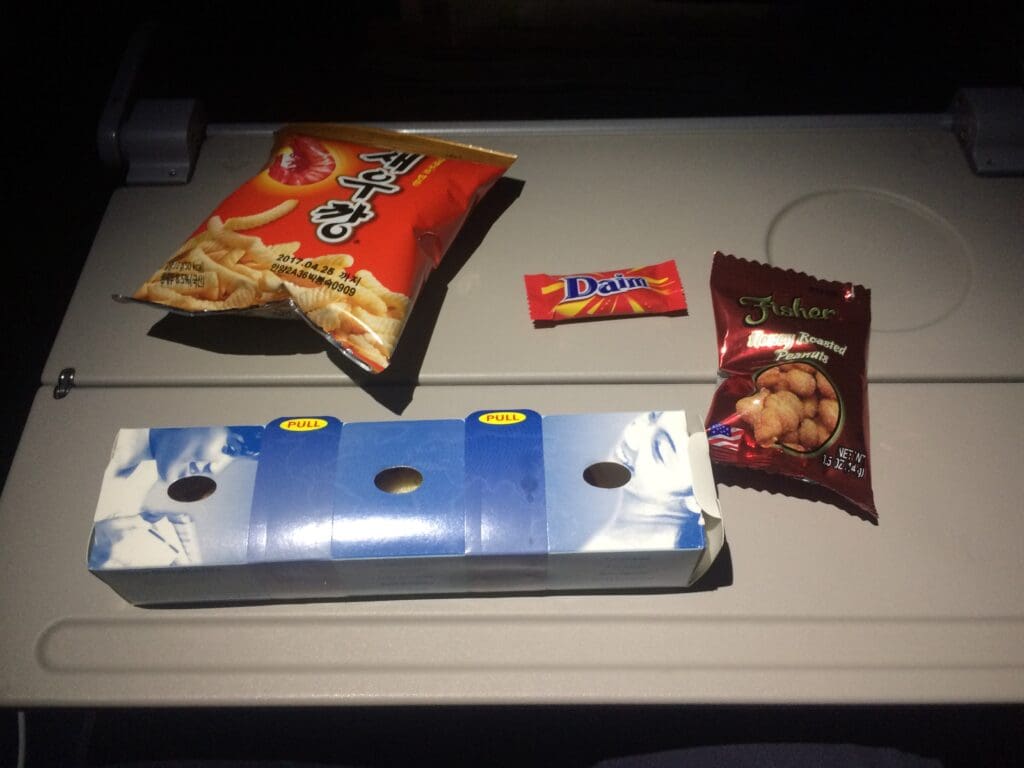
With four hours to go until our arrival, the cabin lighting was switched back on again and the crew made their way through the cabin distributing hot towels in preparation for the final meal service of the flight. A short time later, a friendly crew member offered me the choice of pork bulgogi, Chinese style chicken or fish pasta. Keeping things traditional, I went for the bulgogi. This was perfectly sufficient and of decent quality, and thus once more, I was left with no complaints.
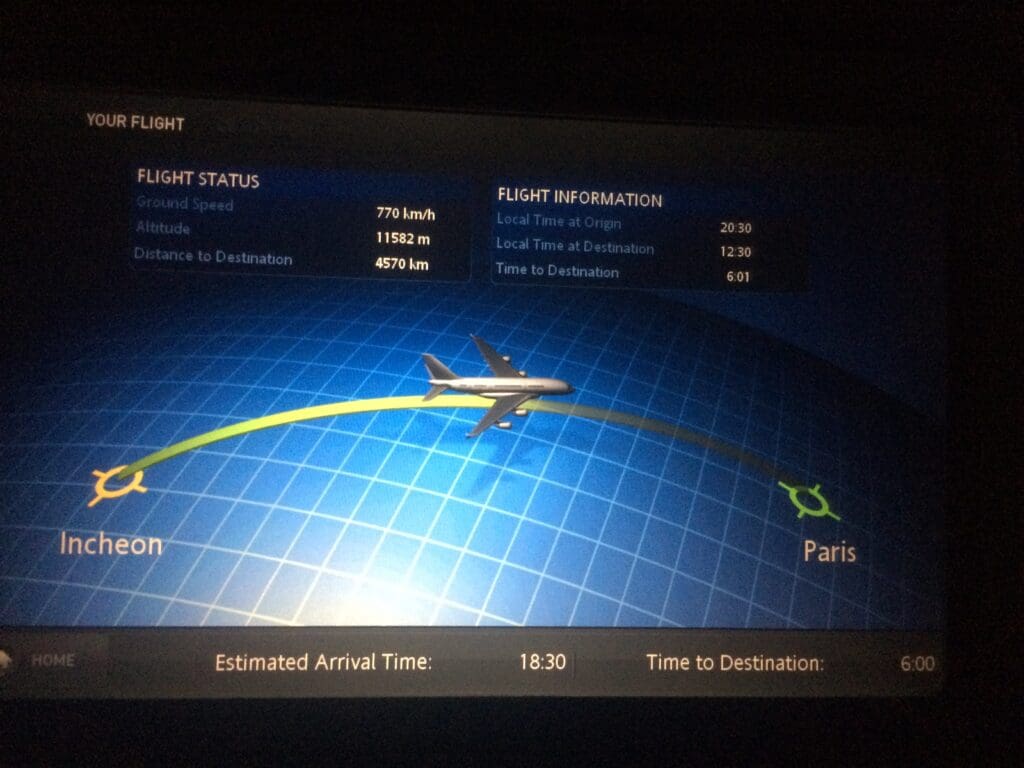
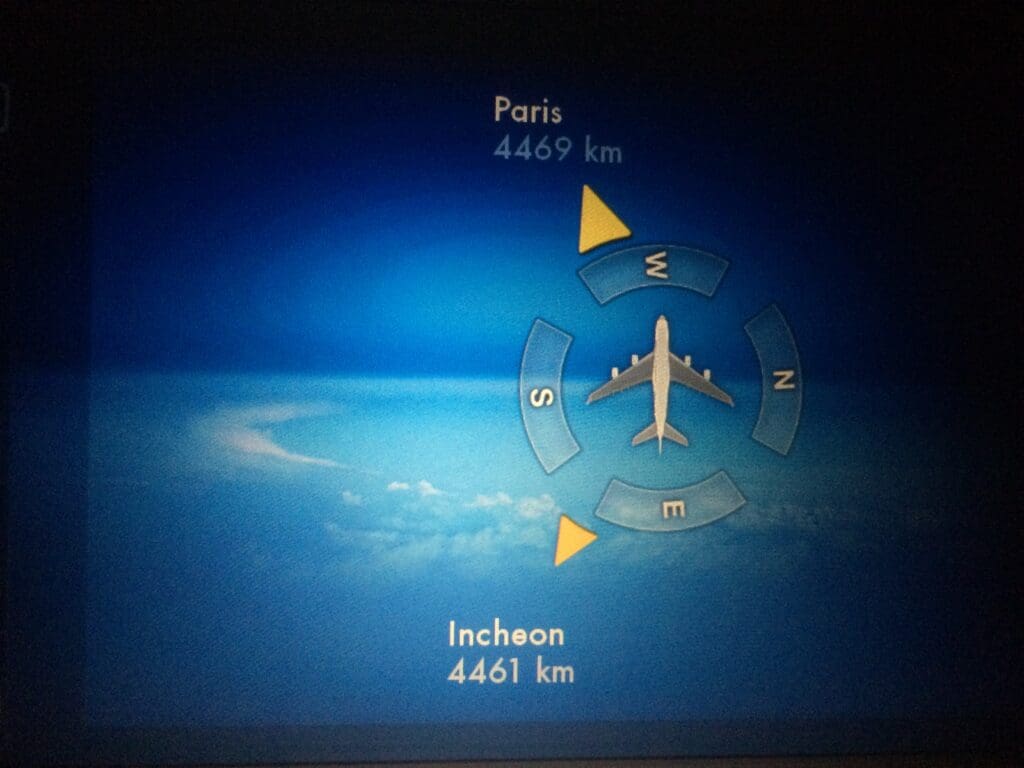
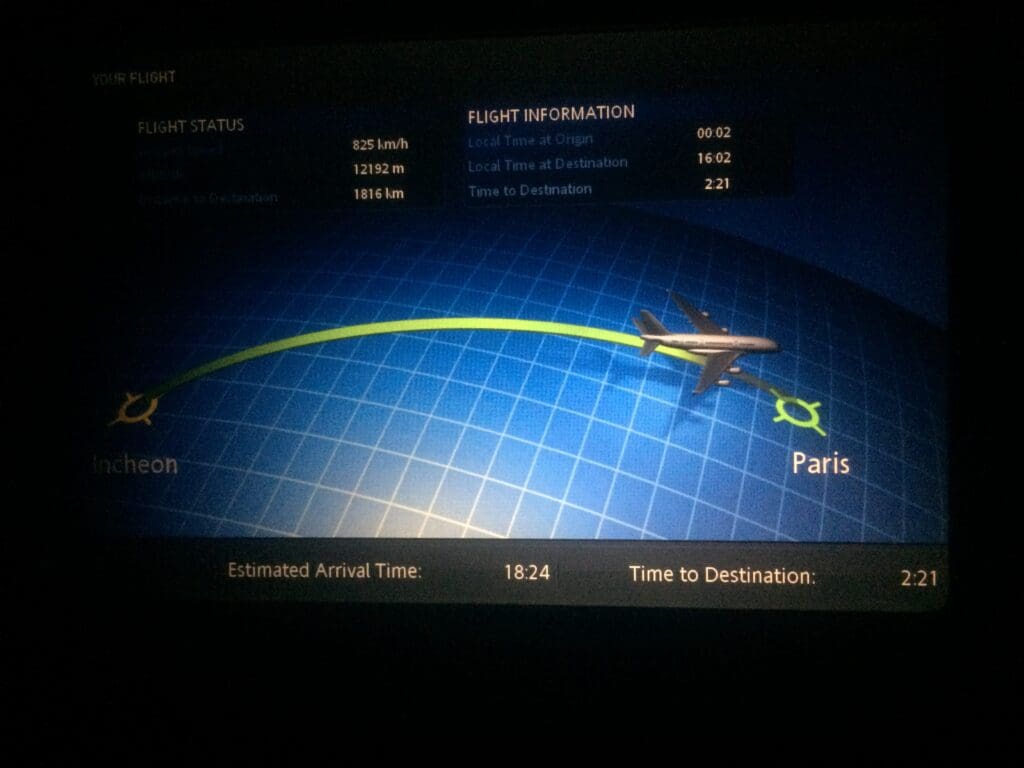
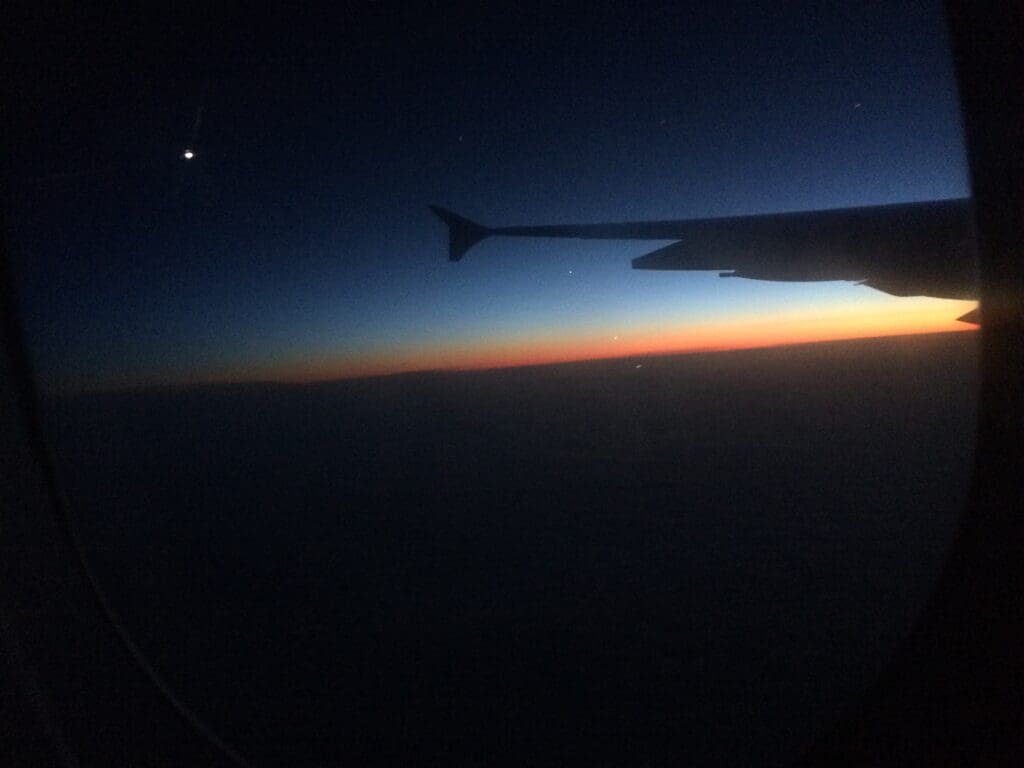
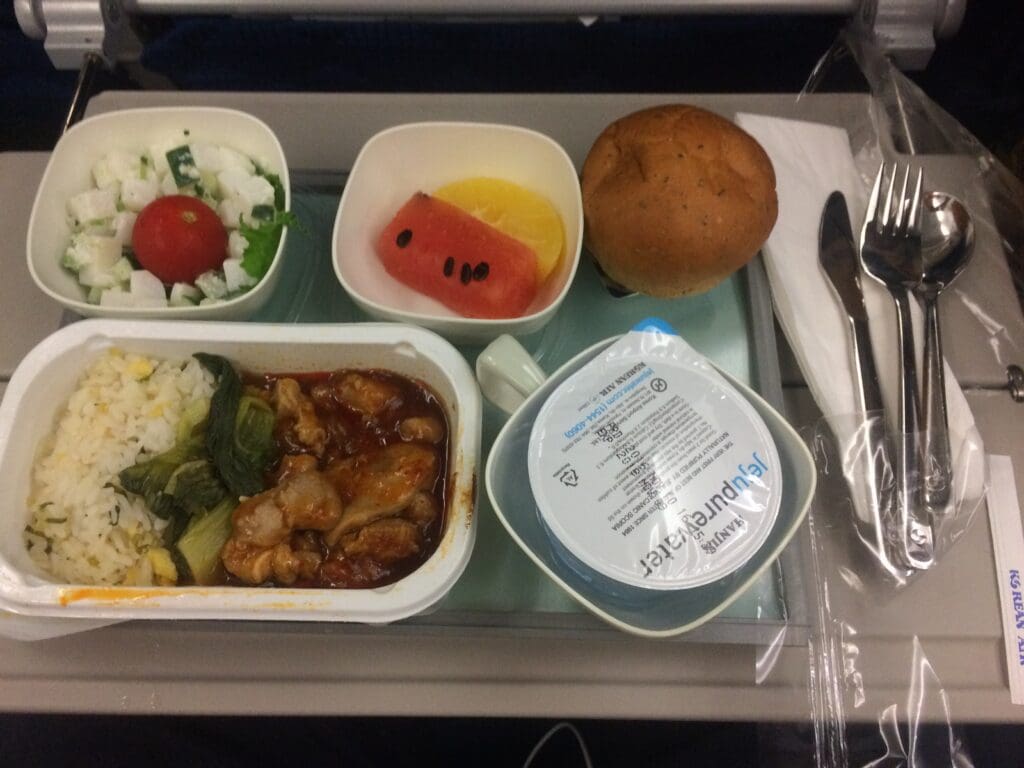
After this service, the lights were turned back off and many passengers seemed to fall asleep again. Admittedly, the timing of the final meal was a little awkward. Surely it would have made more sense to serve this closer to Paris. After eating this, I drifted in and out of sleep and woke up just as the captain performed their second and final announcement. By this time, the aircraft was crossing over the border between Germany and France, just to the north of Luxembourg and south of the Dutch city of Maastricht, and was forty minutes away from landing in Paris. At this stage of the flight, the Airbus was subjected to its first notable bout of turbulence during the flight, although this ended up not lasting for more than five minutes or so.

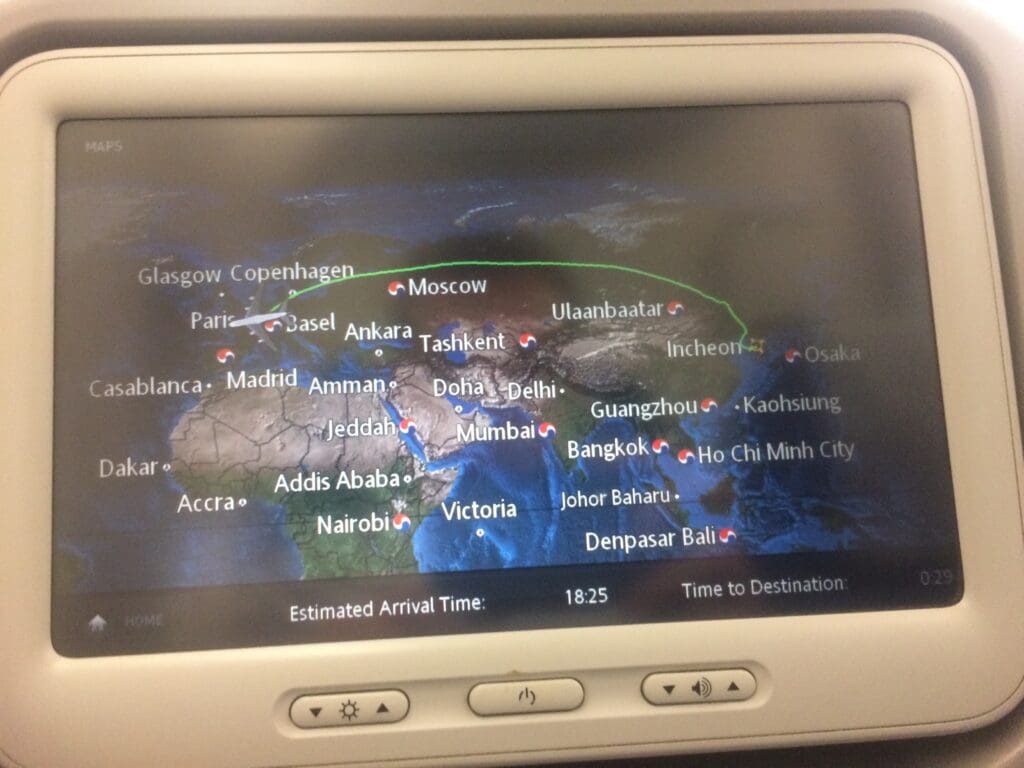
A short time after the captain had performed their announcement, the Airbus commenced its descent and soon the orangey glow of the lights of France became increasingly clearer. During this time, I attempted to equalise the pressure in my ears although suffering from a bad cold, I managed to fail in this task and ended up feeling a short sharp shock as one of my eardrums perforated! Continuing our descent, without entering any holding pattern the Airbus glided down onto Paris CDG’s Runway 08R before making a smooth touchdown at 1825 and making a slow taxi over to Stand E30. Once the Airbus’ engines had spooled down, the jet bridges were connected and it did not seem to take too long to disembark at which point my thoughts moved to the transit process.
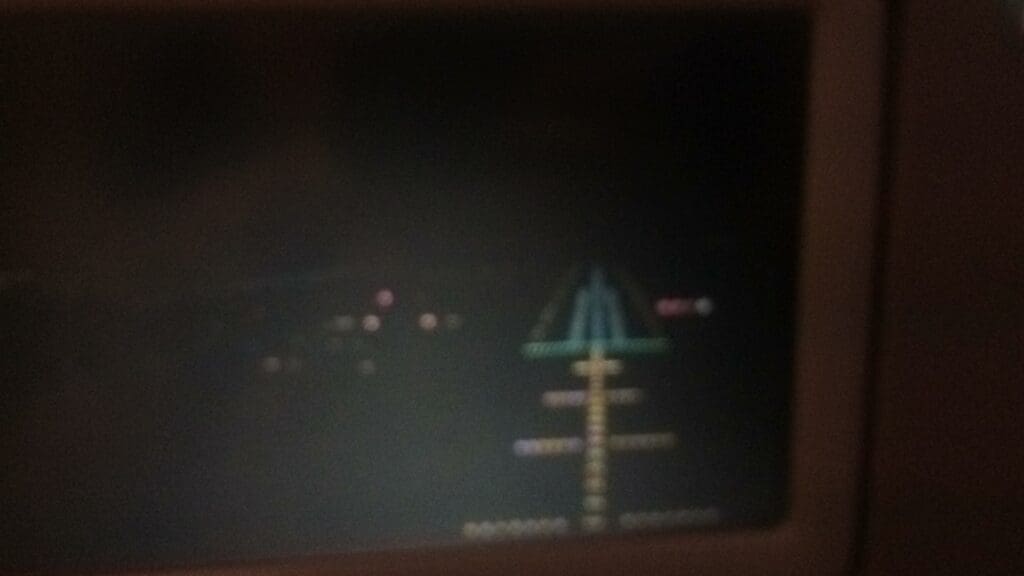
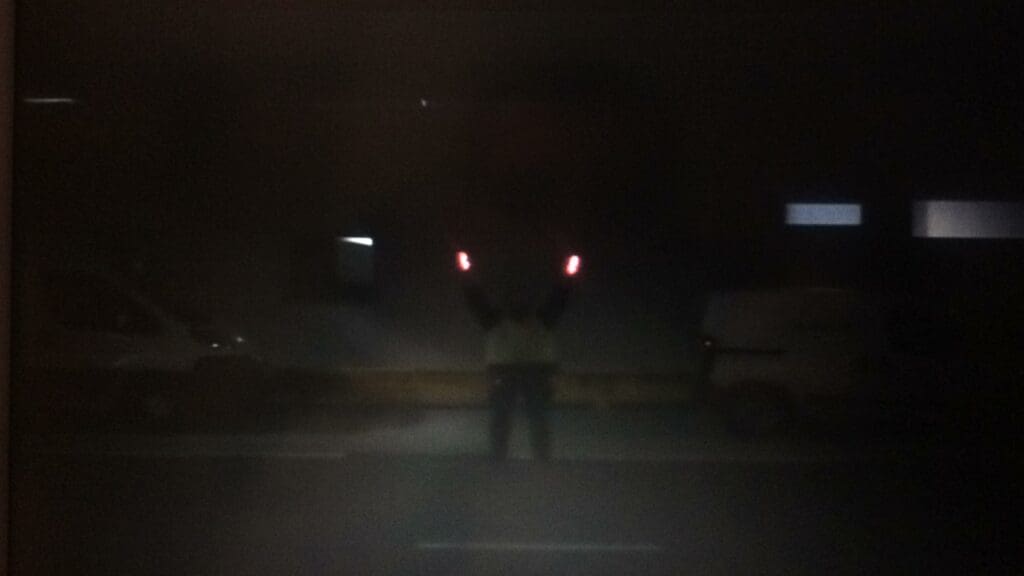
The Next Hop
With both Flybe and Korean Air utilising Paris CDG’s Terminal 2E, theoretically, I could have enjoyed an easy transit. This was especially true seeing as both my departure and arrival gates were located almost next to each other! Unfortunately, the fact that I could not check-in for my Flybe service to Manchester either online or at Seoul Incheon meant that I would have to pass through immigration, head landside, pass through security and pass through immigration before finally making it back to the gate. This was complicated a little further by the fact that I would have to take the automated people mover over to the main portion of Terminal 2E.
Getting things off to a good start, it seemed like most of those who had disembarked from the Korean Air flight were bound for London Heathrow onboard one of Air France’s two evening services over to the British capital. With these passengers able to head straight to their next gate, immigration was a quick and hassle free experience, and I made it into France within a matter of seconds after arriving in the immigration hall. From there, I steamed through the baggage collection hall and made my way back upstairs to the modern and spacious check-in hall. Making a beeline for Flybe’s check-in counters, there, a fair gaggle of passengers could be seen waiting to check-in for both the Manchester flight as well as a flight to Birmingham.
Joining the queue, after a few minutes I made it to a desk and had a quick and painless interaction before being handed a boarding pass. Wasting no time, my next stop was immigration, sailing through this, I caught the train back to the satellite terminal where I had been around twenty minutes earlier and reached the security checkpoint. Unfortunately, despite there being plenty of open checkpoints there, I was rather dismayed to find that just one of these was open and thus a rather long line of frustrated and concerned looking passengers could be seen. Eventually, after a disappointing 25 minute wait, I made it through and was free to explore the delights of the satellite terminal. Wandering around, I found Paris CDG’s Terminal 2E to be an okay place to wait, although it did seem to be rather dirty in places. Fortunately, the complimentary wifi worked well and there were plenty of places to sit and linger whilst I waited for the delayed flight to arrive.
Eventually the Embraer 195 touched down from Manchester and pulled into the stand. With passengers soon piling off, perhaps seeking to minimise the impact of the delay, the aircraft was turned around in a rather quick manner and before I knew it I was waiting in the cool air outside whilst the cabin crew went through their final checks prior to the commencement of boarding. That evening, the flight to Manchester seemed to be totally full, with a range of passengers onboard including business people, tourists and weary looking people connecting off long haul flights from Asia such as myself. The aircraft taking us to Manchester was Embraer 195, G-FBEK. This aircraft was delivered to Flybe in April 2008 and had been kept in storage at Newquay and Exeter from January 2014 to February 2016.
Inside, the aircraft bore a strong resemblance to the Flybe Embraer that I had flown from Cork to Cardiff several months earlier, with this being worn, battered and rather dirty. Furthermore, there was a fair amount of commotion as it appeared that there was not enough space for all passengers’ carry-on luggage and thus some of this had to end up making the journey to Manchester in the hold.
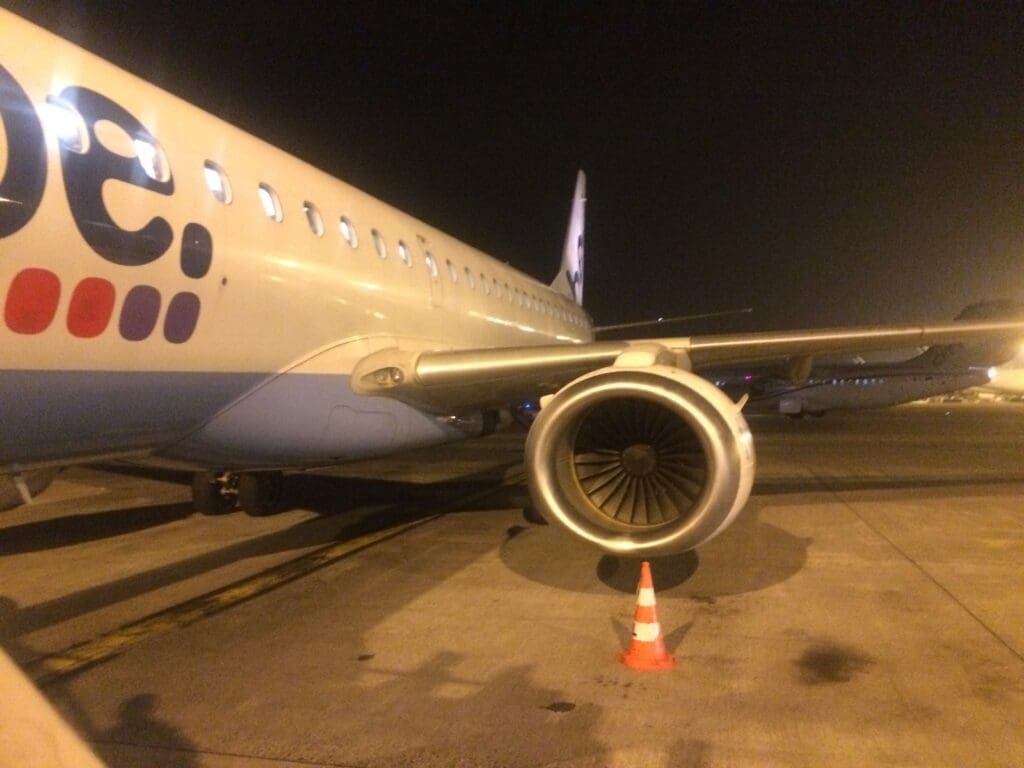
That evening, the two flight attendants both appeared to be rather unhappy, with both members complaining to passengers about having been called into work that evening from home standby due to a sick crew member – with this perhaps explaining the delay to our flight. Following a quick welcome message from the captain who offered a detailed overview of the route up to Manchester, the Embraer was pushed back and made a quick taxi over to Runway 08R. Following a short hold whilst we waited for a Tokyo bound Japan Airlines Boeing 787-8 and an Iberia Express Airbus A320 to depart, the Embraer blasted off into the night skies of France.
Shortly after departure the BoB service commenced and UK landing forms were handed out for non-EU citizens. Being rather shattered, I ended up sleeping for much of the short flight and woke up to the first officer’s pre-arrival announcement. A short time later, the Embraer made a smooth touchdown in Manchester and following a short taxi we arrived at Terminal 3’s Stand 44.
Conclusion
Korean Air offered a good, long haul product and I wouldn’t hesitate to fly them again if they offered reasonable prices. Their economy class seat was comfortable and spacious, and even if the flight had been full I’m sure that I would have still been reasonably comfortable throughout the flight. Their IFE was up to date, good and responsive. The crew were pleasant, friendly and attentive. Whilst the food was good and plentiful, the timing of the final meal seemed a little awkward, perhaps the only comment here would be that perhaps it would be slightly better if this meal was served closer to landing.

